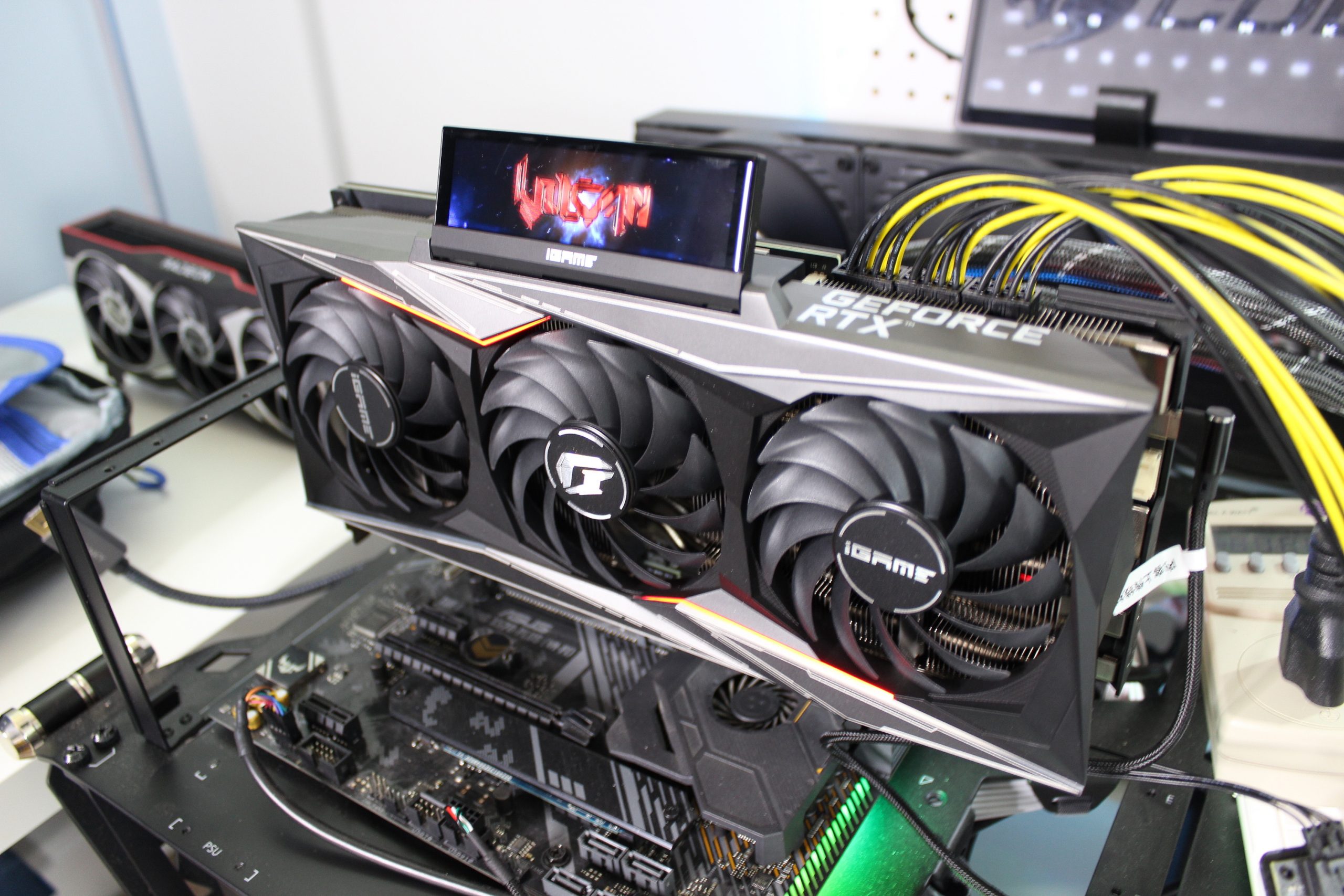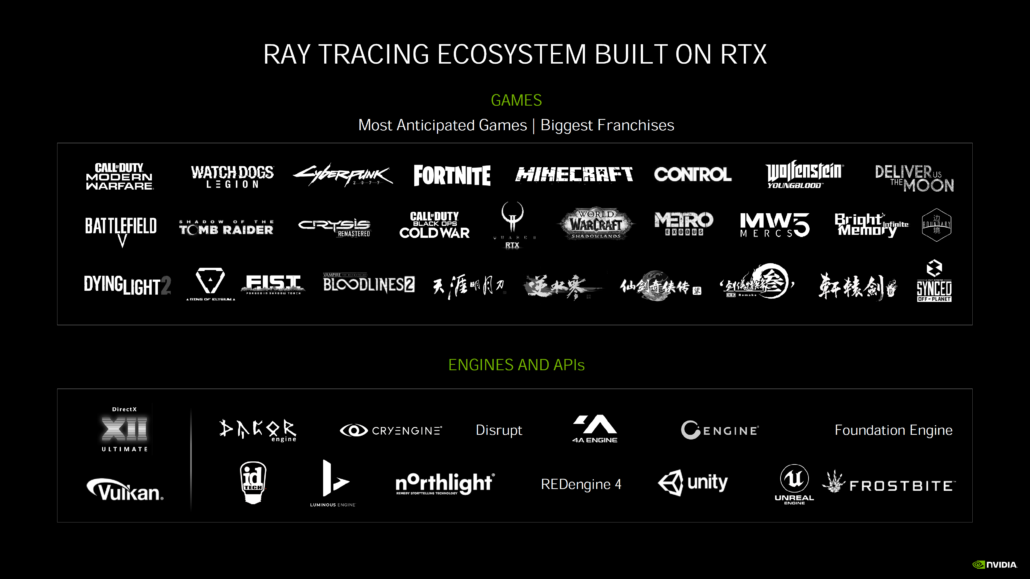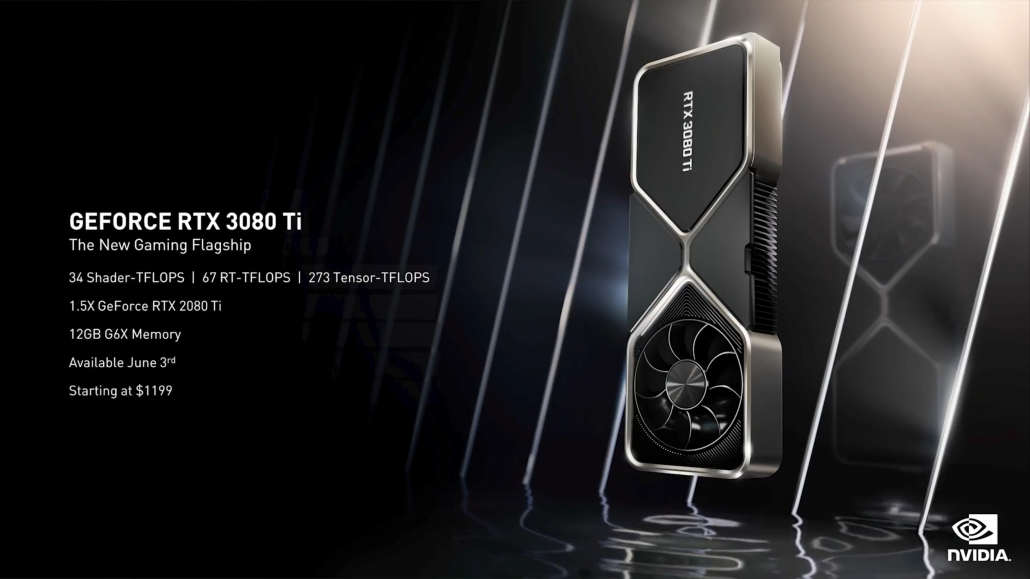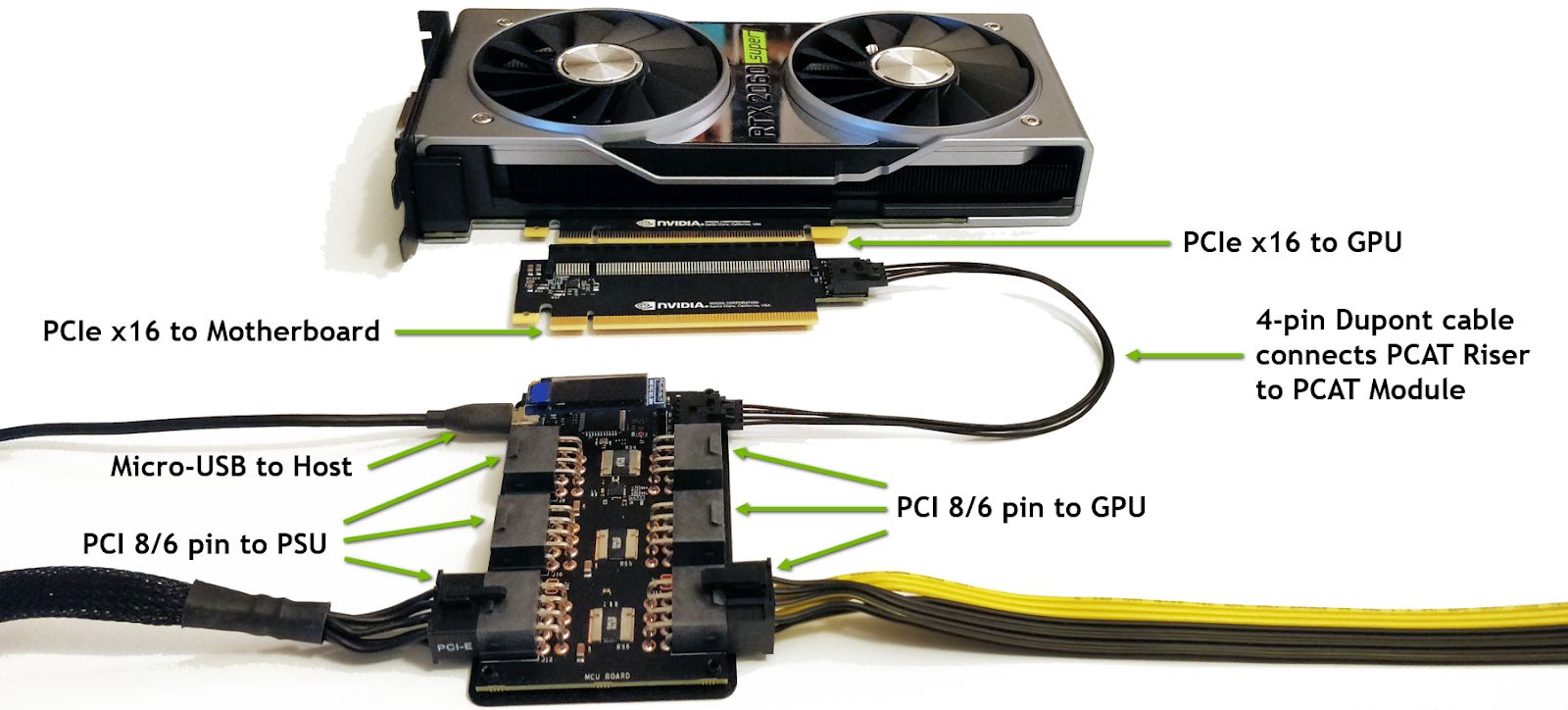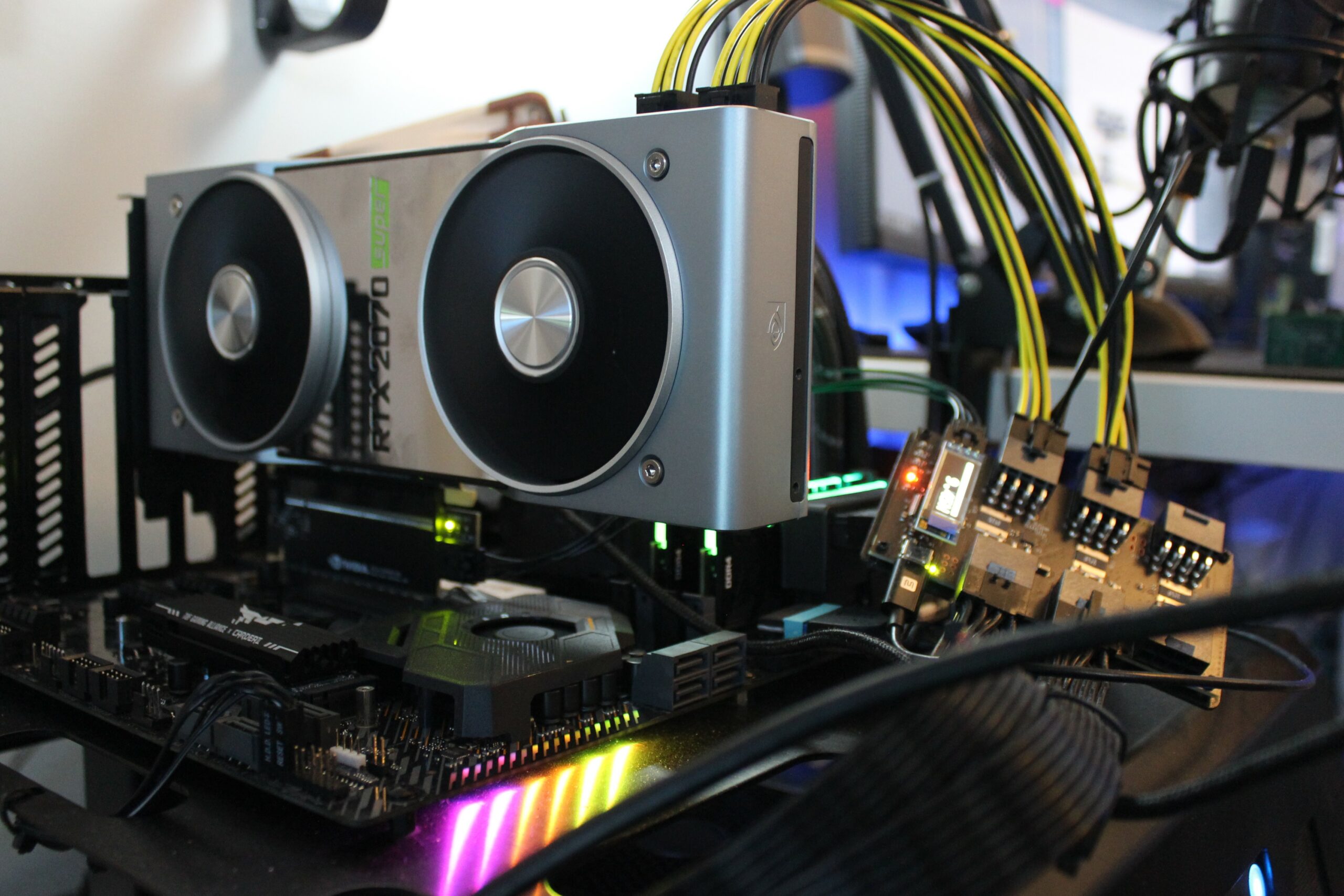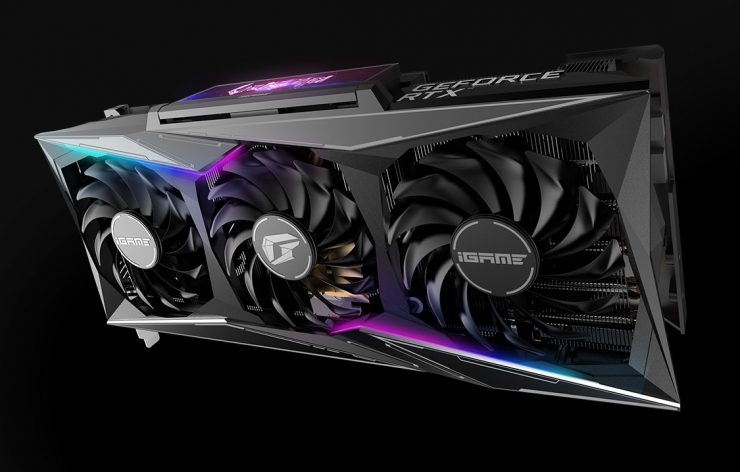
Mantendo viva a tradição de lançar uma nova placa GeForce classe Titanium, a NVIDIA apresenta sua GeForce RTX 3080 Ti. A GPU Ampere é construída sobre a base estabelecida por Turing. Denominadas como seu maior salto de geração, as GPUs NVIDIA Ampere se destacam em comparação com as gerações anteriores em tudo.
A linha Ampere oferece desempenho de shader mais rápido, desempenho de rastreamento de raio mais rápido e desempenho de IA mais rápido. Construído em um nó de processo totalmente novo e apresentando uma arquitetura projetada desde o início, o Ampere é um produto matador com muitos números para falar.
O fundamental do Ampere era levar tudo o que a NVIDIA aprendeu com seu Turing arquitetura e não apenas refiná-la, mas usar seu DNA para formar um produto em uma categoria de desempenho completamente nova. Grandes afirmações foram feitas pela NVIDIA quando lançou sua linha Ampere no início deste mês e iremos descobrir se a NVIDIA atingiu todos os níveis com sua arquitetura Ampere, já que esta análise será o seu caminho para ver o que faz Ampere e como ele se desempenha em relação a sua predecessores.
Agora a NVIDIA está dando um passo à frente com o lançamento de suas placas gráficas GeForce RTX 3080 Ti e GeForce RTX 3070 Ti, projetadas para competir com a Radeon RX 6900 Placas de vídeo da série & RX 6800.
Placas de vídeo para jogos NVIDIA GeForce RTX 30 Series-O maior salto de desempenho de GPU da história recente
Turing não era apenas um núcleo gráfico, era o núcleo gráfico que se tornaria a base das futuras GPUs. O futuro se concretiza agora, com os consoles da próxima geração aprofundando-se nas conversas sobre rastreamento de raios e técnicas de superamostragem assistida por IA. NVIDIA teve uma vantagem inicial com Turing e sua geração Ampere só fará as coisas infinitamente melhor.
A GPU Ampere faz muitas coisas tradicionais que esperaríamos de uma GPU, mas, ao mesmo tempo, também quebra a barreira quando se trata de operações de GPU não tradicionais. Apenas para resumir alguns recursos:
Novo Multiprocessador de streaming (SM) Novos núcleos de tensor de Turing Novos aceleração de rastreamento de raio em tempo real Novos aprimoramentos de sombreamento Novos recursos de aprendizado profundo para gráficos e inferência Novo subsistema de memória de alto desempenho GDDR6X Novo NVLINK de segunda geração Interconecte o novo mecanismo de exibição HDMI 2.1 e NVENC/NVDEC de última geração
As tecnologias mencionadas acima são alguns dos principais blocos de construção da GPU Ampere, mas há mais dentro do núcleo gráfico em si que falaremos em detalhes, então vamos começar iniciado.
NVIDIA GeForce RTX 30 Series Preços por segmento
A NVIDIA GeForce RTX 30 series é composta por um portfólio diversificado de placas gráficas. A linha começa na GeForce RTX 3060 com um MSRP de $ 329 e vai até configurações mais sofisticadas a partir de $ 499 nos EUA para a GeForce RTX 3070, $ 599 nos EUA para a GeForce RTX 3070 Ti, $ 699 nos EUA para a GeForce RTX 3080, US $ 1199 para a GeForce RTX 3080 Ti e US $ 1499 para a GeForce RTX 3090. A própria NVIDIA chama a GeForce RTX 3080 Ti de placa de vídeo principal e não a GeForce RTX 3090.
O RTX 3080 e RTX 3070 têm preços bons e estão em linha com seus predecessores, mas a GeForce RTX 3090 oferece tudo com um preço de $ 1499 nos EUA. Até mesmo a GeForce RTX 3080 Ti teve um aumento de preço em comparação com o MSRP do RTX 2080 Ti (US $ 999 contra US $ 1199). A NVIDIA chama a GeForce RTX 3090 de”BFGPU”e de acordo com a terminologia, parece que este é um novo nome de marketing para a placa de vídeo Titan. É provável que pudéssemos ver uma placa baseada em Titan com a marca Quadro com especificações mais rápidas fora da caixa, mas a GeForce RTX 3090 é puramente uma placa de vídeo para jogos com toda a potência para intensas cargas de trabalho profissionais e de workstation.
Com isso dito, a GeForce RTX 3080 substitui a RTX 2080 SUPER na mesma faixa de preço e a GeForce RTX 3070 substitui a GeForce RTX 2070 SUPER na mesma faixa de preço. Dada essa tendência, podemos ver as variantes mais convencionais custando tanto quanto suas placas da série RTX 20 SUPER, mas com um desempenho mais alto pronto para uso.
Segmento de GPU NVIDIA GeForce/Preços Tier
Além das especificações/atualização de preço, as tecnologias RTX da NVIDIA estão sendo amplamente adotadas pelos principais motores de jogos e APIs, como DirectX (DXR) da Microsoft, Vulkan , Unreal Engine, Unity e Frostbite. Embora houvesse apenas três títulos RTX em torno do lançamento das placas da série RTX 20, a NVIDIA agora tem pelo menos 28 títulos que utilizam seu conjunto de recursos RTX para oferecer rastreamento de raio em tempo real com mais em breve. Em além disso, com os próximos consoles confirmados para apresentarem rastreamento de raios, os desenvolvedores também podem fazer uso da tecnologia RTX para ajustar os jogos futuros para o hardware GeForce RTX. Atualmente, a NVIDIA tem 13 motores de jogo que estão aproveitando suas tecnologias RTX para uso em seus jogos futuros e existentes, enquanto as APIs Vulkan e DirectX 12 Ultimate fazem parte do ecossistema RTX na plataforma de PC. Então, para esta análise, vou dar uma olhada no COLORFUL iGame GeForce RTX 3080 Ti OC-Placa de vídeo V que carrega um MSRP de $ 1699 por um prêmio de $ 500 sobre o MSRP sugerido pela NVIDIA. A NVIDIA GeForce RTX 3080 Ti é uma força a ser considerada. Ele assume o trono da placa de vídeo para jogos de PC mais rápida, sem que nada chegue nem perto disso. É surpreendentemente muito mais rápido do que a GeForce RTX 2080 Ti que é seu antecessor baseado em Turing, mas apenas ser rápido não é suficiente para uma placa dessa escala ou preço. A GeForce RTX 3080 Ti carrega mais núcleos, mais memória, maior eficiência de desempenho e também carrega traçado de raio de última geração e núcleos tensores que a tornam uma placa gráfica verdadeiramente de última geração. A NVIDIA projetou a GeForce RTX 3080 Ti, não apenas para qualquer jogador, mas todos os jogadores que desejam ter o melhor desempenho gráfico 4K à mão para alimentar a próxima geração de títulos de jogos AAA com visuais soberbos e fluidez insana. Não é apenas o FPS que importa hoje em dia, são os visuais e uma taxa de quadros mais suave também e é exatamente para isso que a série GeForce RTX 30 foi feita para se destacar. Há muito o que falar sobre as placas de vídeo para jogos Ampere da NVIDIA, então vamos começar com as especificações. Especificações da placa de vídeo NVIDIA GeForce RTX 3080 Ti A placa de vídeo NVIDIA GeForce RTX 3080 Ti 12 GB FE (Founders Edition) apresenta o design PG132-SKU18 PCB e o núcleo gráfico GA102-225-KD-A1. A GPU GA102-225 apresenta um total de 10240 núcleos CUDA em 80 unidades SM. A GPU apresenta uma velocidade de clock de base de 1365 MHz e aumento de 1665 MHz, ambos mais lentos do que as GPUs GA102 GeForce RTX existentes. Quanto à memória, o cartão terá 12 GB de memória GDDR6X. Ao contrário das velocidades de 19,5 Gbps do RTX 3090, a GeForce RTX 3080 Ti retém as mesmas velocidades de memória do RTX 3080 a 19 Gbps. Como estamos obtendo 12 GB de memória, a NVIDIA GeForce RTX 3080 Ti usará uma interface de barramento de 384 bits, o que equivale a uma largura de banda total de 912 GB/s. Portanto, embora vejamos uma redução de 8 GB VRAM em relação à especificação anterior, a interface de barramento maior deve gerar uma largura de banda de memória maior. O TGP para a placa está definido para ser um pouco maior do que o RTX 3080 a 350 Watts. Isso é definitivamente necessário para alimentar os núcleos extras, então a NVIDIA pode ter que otimizar um pouco os relógios aqui. Em termos de desempenho, a placa gráfica é considerada tão rápido quanto o RTX 3090 , mas com metade da memória e tecnologia LHR ativada. Quanto aos números de computação, o RTX 3080 Ti apresenta 34 TFLOPs de shader, 67 RT-TFLOPs e 273 TFLOPs de tensor (Sparsity). O design da placa é semelhante às placas de vídeo NVIDIA GeForce RTX 3080 Founders Edition existentes. A NVIDIA não escolheu o design BFG volumoso como o RTX 3090 e manteve o design refrigerado a ar FE Flow-Through de 2 slots mais padrão. A placa é alimentada por um único conector Microfit de 12 pinos. As saídas de vídeo incluem 1 HDMI 2.1 e três conectores DP 2.0. O cartão estará disponível para compra no dia 2 de junho por $ 1199 US. Vários modelos personalizados serão anunciados em breve pelos parceiros da placa NVIDIA. Caso queira ler nosso mergulho completo na arquitetura de GPU NVIDIA Ampere e a análise da GeForce RTX 3080 Ti Founders Edition, acesse este link . Apresentação do iGAME GeForce RTX 3080 Ti Vulcan OC-V Amostra do TdfROur do iGAME GeForce RTX 3080Ti Vulcan OC-V não veio em uma caixa de varejo, então não podemos compartilhar o que parece, mas a placa será a mesma junto com os cabos incluídos e suporte de GPU. O iGAME GeForce RTX 3080Ti Vulcan OC-V é uma unidade absoluta de uma placa que requer 3 slots completos para instalação e muito espaço entre a placa-mãe e o painel lateral já que a placa é muito mais larga do que um modelo de referência padrão. A parte frontal da placa apresenta o arranjo de 3 ventoinhas com um hub estacionário que cria um efeito muito legal quando as ventoinhas estão ativadas, ele sai do hub exatamente como você o deixou definido (e o hub é ajustável para que você possa ter os logotipos voltados qualquer direção). A parte traseira da placa apresenta um acabamento em dois tons muito bom com marca clara e um logotipo RGB iGAME na parte traseira da placa. O perfil lateral do cartão mostra sua massa muito bem. Cooler de slot triplo com uma bela estética limpa, basicamente consistindo em outro logotipo GeForce RTX junto com a tela LCD colorida na lateral. Você também pode ver os conectores triplos de 8 pinos invertidos na parte traseira. Uma grande atração para esta placa de vídeo em particular é certamente a tela LCD, e com muitas pessoas montando suas placas de vídeo verticalmente COLORFUL levou isso em consideração e colocou a tela em um mecanismo de inclinação que permite até 90 graus de ajuste. O I/O da GPU ainda possui o botão OC exclusivo do COLORFUL, que é realmente interessante, pois um perfil permite que a placa funcione nas velocidades de referência padrão e o outro permite as configurações de overclock da placa de vídeo (que é o que usamos para esta revisão). Junto com a placa de vídeo, na caixa, você encontrará os cabos necessários para conectar a GPU a um conector USB 2.0 aberto para controlar a tela com o software iGAME Game Center. Você também encontrará um suporte de GPU e uma chave de fenda para segurar esta enorme placa de vídeo para evitar que ela afunde, ninguém quer gastar tanto dinheiro e ver sua GPU parecer que está prestes a quebrar seu suporte PCIe dentro de sua construção. O LCD da placa de vídeo é na verdade um pouco mais útil do que eu esperava, por padrão ele mostra apenas o logotipo do Vulcan em uma animação suave, mas quando você instala o software e o cabo incluído, você pode exibir os diagnósticos da placa gráfica desde as velocidades do clock até as temperaturas, mas você precisará do software para fazer isso. Não sou um grande especialista em software de terceiros, mas este i A implementação exige muito mais cuidado do que o iGAME RTX 3080 Advanced OC e isso é ótimo, pois você precisará usar isso em seu sistema para obter o máximo desta placa de vídeo extremamente cara. Você pode alterar a imagem, bem como as informações exibidas e com que freqüência. Infelizmente, não consegui reproduzir o DOOM na tela, o que foi um pouco chato. Usamos o seguinte sistema de teste para comparação entre as diferentes placas de vídeo. Os drivers mais recentes disponíveis no momento do teste foram usados pela AMD e NVIDIA em uma versão atualizada do Windows 10. Todos os jogos testados foram corrigidos para a versão mais recente para melhor otimização de desempenho para GPUs NVIDIA e AMD. * Nota sobre a BARRA redimensionável. O GeForce RTX 3060 marca o início do lançamento da NVIDIA com suporte para BAR redimensionável. Com Radeon suportando-o por meio de memória de acesso inteligente e minha bancada de teste é totalmente compatível com ambos, daqui para frente esse recurso será habilitado por meio dos testes. Portanto, nesta análise e nas análises futuras, será observado que os resultados estão com esse recurso ativado. Todos os jogos foram testados em resoluções de 1440p, Ultrawide (3440×1440) e 4K UHD para jogos rasterizados tradicionais e 2560×1440 (QHD) e 4k UHD para testes de jogos Ray Traced. A qualidade da imagem e as configurações gráficas são fornecidas com cada descrição do jogo. Os cartões de”referência”são as configurações de estoque. Firestrike está executando a API DX11 e ainda é uma boa medida de desempenho de escalonamento da GPU, neste teste executamos as versões Extreme e Ultra do Firestrike que roda em 1440p e 4K e registramos a pontuação de gráficos apenas porque a física e combinada são não é pertinente a esta revisão. var image=new Image (); image.src=”https://cdn.wccftech.com/wp-content/uploads/2019/07/logo-transparent-2.png”; var mychart_3dmarkfirestrikeextremegraphics=new Chart (document.getElementById (“wccf_chart_3dmarkfirestrikeextremegraphics”), {tipo:”horizontalBar”, dados: {rótulos: [“RTX 3090″,”Vucan RTX 3080 RX 6900″,”RTX 3080″,””,”RTX 3080″,”RX 6800 XT”,”RTX 2080 Ti”], conjuntos de dados: [{label:”Score”, backgroundColor:”rgba (244,67,54,0,75)”, dados: [23875, 24121,23206,27292,21069,25738,16174]}],}, opções: {keepAspectRatio: false, legend: {display: true, position:”bottom”}, título: {display: true, text:”3DMark Firestrike Extreme Graphics”}, dicas: {mode:”index”, intersect: false}, hover: {mode:”mais próximo”, intersect: true}, escalas: {xAxes: [{display: true, scaleLabel: {display: false , labelString:””}, ticks: {beginAtZero: true}}], yAxes: [{display: true, scaleLabel: {display: false, labelString:””}, ticks: {beginAtZero: true}}]}, plug-ins: {datalabels: {alig n:”fim”, âncora:”fim”, deslocamento: 0, cor:”# 222″, grampo: verdadeiro}}, marca d’água: {imagem: imagem, x: 0, y: 0, largura: 223, altura: 40, opacidade: 1, alignX:”meio”, alignY:”meio”, posição:”voltar”,}}}); var image=new Image (); image.src=”https://cdn.wccftech.com/wp-content/uploads/2019/07/logo-transparent-2.png”; var mychart_3dmarkfirestrikeultragraphics=new Chart (document.getElementById (“wccf_chart_3dmarkfirestrikeultragraphics”), {type:”horizontalBar”, dados: {labels: [“RTX 3090″,”Vucan RTX 3080 Ti”,”RTX 3080 Ti”,”RX 6900 Ti”,”RX”,”RTX 3080″,”RX 6800 XT”,”RTX 2080 Ti”], conjuntos de dados: [{label:”Score”, backgroundColor:”rgba (244,67,54,0,75)”, dados: [12478, 12565,12109,13584,10854,12772,8033]}],}, opções: {keepAspectRatio: false, legend: {display: true, position:”bottom”}, title: {display: true, text:”3DMark Firestrike Ultra Graphics”}, dicas: {mode:”index”, intersect: false}, hover: {mode:”mais próximo”, intersect: true}, escalas: {xAxes: [{display: true, scaleLabel: {display: false , labelString:””}, ticks: {beginAtZero: true}}], yAxes: [{display: true, scaleLabel: {display: false, labelString:””}, ticks: {beginAtZero: true}}]}, plug-ins: {datalabels: {align:”end”, âncora:”fim”, deslocamento: 0, cor:”# 222″, grampo: verdadeiro}}, marca d’água: {imagem: imagem, x: 0, y: 0, largura: 223, altura: 40, opacidade: 1, alignX:”meio”, alignY:”meio”, posição:”voltar”,}}}); O Time Spy está executando a API DX12 e nós a usamos da mesma maneira que o Firestrike Extreme, onde apenas gravamos a pontuação gráfica, pois a pontuação física está registrando o desempenho da CPU e não é importante para os estão fazendo aqui. var image=new Image (); image.src=”https://cdn.wccftech.com/wp-content/uploads/2019/07/logo-transparent-2.png”; var mychart_3dmarktimespygraphics=new Chart (document.getElementById (“wccf_chart_3dmarktimespygraphics”), {type:”horizontalBar”, data: {labels: [“RTX 3090″,”Vucan RTX 3080 Ti”,”RTX 3080 Ti”,”RX 6900 XT”,”RTX 3080″,”RX 6800 XT”,”RTX 2080 Ti”], conjuntos de dados: [{label:”Score”, backgroundColor:”rgba (244,67,54,0,75)”, dados: [19690, 19697,19275,18468,17763,17848,14064]}],}, opções: {keepAspectRatio: false, legend: {display: true, position:”bottom”}, title: {display: true, text:”3DMark Time Spy Graphics”}, dicas: {mode:”index”, intersect: false}, hover: {mode:”mais próximo”, intersect: true}, escalas: {xAxes: [{display: true, scaleLabel: {display: false , labelString:””}, ticks: {beginAtZero: true}}], yAxes: [{display: true, scaleLabel: {display: false, labelString:””}, ticks: {beginAtZero: true}}]}, plug-ins: {datalabels: {align:”end”, anchor:”end”, offse t: 0, color:”# 222″, clamp: true}}, marca d’água: {image: image, x: 0, y: 0, width: 223, height: 40, opacity: 1, alignX:”middle”, alignY:”meio”, posição:”voltar”,}}}); var image=new Image (); image.src=”https://cdn.wccftech.com/wp-content/uploads/2019/07/logo-transparent-2.png”; var mychart_3dmarktimespyextremegraphics=new Chart (document.getElementById (“wccf_chart_3dmarktimespyextremegraphics”), {type:”horizontalBar”, data: {labels: [“RTX 3090″,”Vucan RTX 3080 RX 6900″,”RTX 3080″,”RTX 3080″,””,”RTX 3080″,”RX 6800 XT”,”RTX 2080 Ti”], conjuntos de dados: [{label:”Score”, backgroundColor:”rgba (244,67,54,0,75)”, dados: [10062, 9995,9803,8976,8862,8583,6602]}],}, opções: {keepAspectRatio: false, legend: {display: true, position:”bottom”}, title: {display: true, text:”3DMark Time Spy Extreme Graphics”}, dicas: {mode:”index”, intersect: false}, hover: {mode:”mais próximo”, intersect: true}, escalas: {xAxes: [{display: true, scaleLabel: {display: false, labelString:””}, ticks: {beginAtZero: true}}], yAxes: [{display: true, scaleLabel: {display: false, labelString:””}, ticks: {beginAtZero: true}}]}, plug-ins: {datalabels: {align:”end”, anch ou:”fim”, deslocamento: 0, cor:”# 222″, grampo: verdadeiro}}, marca d’água: {imagem: imagem, x: 0, y: 0, largura: 223, altura: 40, opacidade: 1, alignX:”meio”, alignY:”meio”, posição:”voltar”,}}}); Port Royal é outra ótima ferramenta do pacote 3DMark, mas esta é 100% voltada para o desempenho de Ray Tracing. Ele carrega sombras de traçado de raio, reflexos e iluminação global para realmente sobrecarregar o desempenho das placas gráficas que têm suporte para traçado de raio baseado em hardware ou software. var image=new Image (); image.src=”https://cdn.wccftech.com/wp-content/uploads/2019/07/logo-transparent-2.png”; var mychart_3dmarkportroyalscore=new Chart (document.getElementById (“wccf_chart_3dmarkportroyalscore”), {type:”horizontalBar”, data: {labels: [“RTX 3090″,”Vucan RTX 3080 Ti”,”RTX 3080 Ti”,”RX 6900 XT”,”RTX 3080″,”RX 6800 XT”,”RTX 2080 Ti”], conjuntos de dados: [{label:”Score”, backgroundColor:”rgba (244,67,54,0,75)”, dados: [12899, 13188,12856,9758,11339,9083,8627]}],}, opções: {keepAspectRatio: false, legend: {display: true, position:”bottom”}, title: {display: true, text:”3DMark Port Royal Score”}, dicas: {mode:”index”, intersect: false}, hover: {mode:”mais próximo”, intersect: true}, escalas: {xAxes: [{display: true, scaleLabel: {display: false , labelString:””}, ticks: {beginAtZero: true}}], yAxes: [{display: true, scaleLabel: {display: false, labelString:””}, ticks: {beginAtZero: true}}]}, plug-ins: {datalabels: {align:”end”, anchor:”end”, offset: 0, color:”# 222″, clamp: true}}, marca d’água: {image: image, x: 0, y: 0, width: 223, height: 40, opacity: 1, alignX:”middle”, alignY:”middle”, posição:”voltar”,}}}); var image=new Image (); image.src=”https://cdn.wccftech.com/wp-content/uploads/2019/07/logo-transparent-2.png”; var mychart_3dmarkpureraytracingfeaturetest=new Chart (document.getElementById (“wccf_chart_3dmarkpureraytracingfeaturetest”), {type:”horizontalBar”, data: {labels: [“RTX 3090″,”Vucan RTX 3080 TiX 6900″,”XT 3080 TiX”,”RTX 3080″,”RTX 3080″,”RX 6800 XT”,”RTX 2080 Ti”], conjuntos de dados: [{rótulo:”Média”, cor de fundo:”rgba (244,67,54,0,75)”, dados: [55,71, 56.38,55.1,29.59,46.75,26.8,30.42]}], }, options: { maintainAspectRatio: false, legend: { display: true, position:”bottom”}, title: {display: true, text:”3DMark Pure Ray Tracing Feature Test”}, tooltips: {mode:”index”, intersect: false}, hover: {mode:”nearest”, intersect: true}, scales: { xAxes: [{ display: true, scaleLabel: {display: false, labelString:””}, ticks: {beginAtZero:true} }], yAxes: [{ display: true, scaleLabel: {display: false, labelString:””}, ticks: {beginAtZero:true} }] } , plugins: { datalabels: { al ign:”end”, anchor:”end”, offset: 0, color:”#222″, clamp: true } }, watermark: { image: image, x: 0, y: 0, width: 223, height: 40, opacity: 1, alignX:”middle”, alignY:”middle”, position:”back”, } } }); Thermals were measured from our open test bench after running the Time Spy graphics test 2 on loop for 30 minutes recording the highest temperatures reported. The room was climate controlled and kept at a constant 22c throughout the testing. *Hot Spot only reported on cards that feature that monitoring point. var image=new Image(); image.src=”https://cdn.wccftech.com/wp-content/uploads/2019/07/logo-transparent-2.png”; var mychart_temperatures22cambient=new Chart(document.getElementById(“wccf_chart_temperatures22cambient”), { type:”horizontalBar”, data: { labels: [“RTX 3090″,”Vucan RTX 3080 Ti”,”RTX 3080 Ti”,”RX 6900 XT”,”RTX 3080″,”RX 6800 XT”,”RTX 2080 Ti”], datasets: [{label:”Hot Spot”,backgroundColor:”rgba(244,67,54,0.75)”,data:[,79,81,98,,95,]}, {label:”Load”,backgroundColor:”rgba(255,160,0,0.75)”,data:[68,74,75,76,77,75,80]}, {label:”Idle”,backgroundColor:”rgba(33,150,243,0.75)”,data:[33,34,33,36,33,35,34]}], }, options: { maintainAspectRatio: false, legend: { display: true, position:”bottom”}, title: {display: true, text:”Temperatures (22c Ambient)”}, tooltips: {mode:”index”, intersect: false}, hover: {mode:”nearest”, intersect: true}, scales: { xAxes: [{ display: true, scaleLabel: {display: false, labelString:””}, ticks: {beginAtZero:true} }], yAxes: [{ display: true, scaleLabel: {d isplay: false, labelString:””}, ticks: {beginAtZero:true} }] }, plugins: { datalabels: { align:”end”, anchor:”end”, offset: 0, color:”#222″, clamp: true } }, watermark: { image: image, x: 0, y: 0, width: 223, height: 40, opacity: 1, alignX:”middle”, alignY:”middle”, position:”back”, } } }); Forza Horizon 4 carries on the open-world racing tradition of the Horizon series. The latest DX12 powered entry is beautifully crafted and amazingly well executed and is a great showcase of DX12 games. We use the benchmark run while having all of the settings set to non-dynamic with an uncapped framerate to gather these results. var image=new Image(); image.src=”https://cdn.wccftech.com/wp-content/uploads/2019/07/logo-transparent-2.png”; var mychart_forzahorizon44kuhdultra=new Chart(document.getElementById(“wccf_chart_forzahorizon44kuhdultra”), { type:”horizontalBar”, data: { labels: [“RTX 3090″,”Vucan RTX 3080 Ti”,”RTX 3080 Ti”,”RX 6900 XT”,”RTX 3080″,”RX 6800 XT”,”RX 6800″,”RTX 3070 Ti”,”RTX 3070″,”RTX 2080 Ti”], datasets: [{label:”AVG FPS”,backgroundColor:”rgba(244,67,54,0.75)”,data:[165,167,162,171,150,161,136,131,120,104]}, {label:”1% Percentile”,backgroundColor:”rgba(255,160,0,0.75)”,data:[142,144,140,149,130,138,118,114,102,90]}], }, options: { maintainAspectRatio: false, legend: { display: true, position:”bottom”}, title: {display: true, text:”Forza Horizon 4 4K UHD Ultra”}, tooltips: {mode:”index”, intersect: false}, hover: {mode:”nearest”, intersect: true}, scales: { xAxes: [{ display: true, scaleLabel: {display: false, labelString:””}, ticks: {beginAtZero:true} }], yAxes: [{ display: true, scale Label: {display: false, labelString:””}, ticks: {beginAtZero:true} }] }, plugins: { datalabels: { align:”end”, anchor:”end”, offset: 0, color:”#222″, clamp: true } }, watermark: { image: image, x: 0, y: 0, width: 223, height: 40, opacity: 1, alignX:”middle”, alignY:”middle”, position:”back”, } } }); Shadow of the Tomb Raider, unlike its predecessor, does a good job putting DX12 to use and results in higher performance than the DX11 counterpart in this title, and because of that, we test this title in DX12. I do use the second segment of the benchmark run to gather these numbers as it is more indicative of in-game scenarios where the foliage is heavy. var image=new Image(); image.src=”https://cdn.wccftech.com/wp-content/uploads/2019/07/logo-transparent-2.png”; var mychart_shadowofthetombraider4kuhddx12highest=new Chart(document.getElementById(“wccf_chart_shadowofthetombraider4kuhddx12highest”), { type:”horizontalBar”, data: { labels: [“RTX 3090″,”Vucan RTX 3080 Ti”,”RTX 3080 Ti”,”RX 6900 XT”,”RTX 3080″,”RX 6800 XT”,”RX 6800″,”RTX 3070 Ti”,”RTX 3070″,”RTX 2080 Ti”], datasets: [{label:”AVG FPS”,backgroundColor:”rgba(244,67,54,0.75)”,data:[94,96,92,88,83,83,69,69,62,63]}, {label:”1% Percentile”,backgroundColor:”rgba(255,160,0,0.75)”,data:[88,89,84,84,78,79,66,65,58,58]}], }, options: { maintainAspectRatio: false, legend: { display: true, position:”bottom”}, title: {display: true, text:”Shadow of the Tomb Raider 4K UHD DX12 Highest”}, tooltips: {mode:”index”, intersect: false}, hover: {mode:”nearest”, intersect: true}, scales: { xAxes: [{ display: true, scaleLabel: {display: false, labelString:””}, ticks: {beginAtZero:true} }], yAxe s: [{ display: true, scaleLabel: {display: false, labelString:””}, ticks: {beginAtZero:true} }] }, plugins: { datalabels: { align:”end”, anchor:”end”, offset: 0, color:”#222″, clamp: true } }, watermark: { image: image, x: 0, y: 0, width: 223, height: 40, opacity: 1, alignX:”middle”, alignY:”middle”, position:”back”, } } }); DOOM Eternal brings hell to earth with the Vulkan powered idTech 7. We test this game using the Ultra Nightmare Preset and follow our in-game benchmarking to stay as consistent as possible. var image=new Image(); image.src=”https://cdn.wccftech.com/wp-content/uploads/2019/07/logo-transparent-2.png”; var mychart_doometernal4kuhdultranightmare=new Chart(document.getElementById(“wccf_chart_doometernal4kuhdultranightmare”), { type:”horizontalBar”, data: { labels: [“RTX 3090″,”Vucan RTX 3080 Ti”,”RTX 3080 Ti”,”RX 6900 XT”,”RTX 3080″,”RX 6800 XT”,”RX 6800″,”RTX 3070 Ti”,”RTX 3070″,”RTX 2080 Ti”], datasets: [{label:”AVG FPS”,backgroundColor:”rgba(244,67,54,0.75)”,data:[199,198,193,173,174,163,135,119,116,119]}, {label:”1% Percentile”,backgroundColor:”rgba(255,160,0,0.75)”,data:[145,144,141,140,134,127,105,88,88,89]}], }, options: { maintainAspectRatio: false, legend: { display: true, position:”bottom”}, title: {display: true, text:”DOOM Eternal 4K UHD Ultra Nightmare”}, tooltips: {mode:”index”, intersect: false}, hover: {mode:”nearest”, intersect: true}, scales: { xAxes: [{ display: true, scaleLabel: {display: false, labelString:””}, ticks: {beginAtZero:true} }], yAxes: [{ d isplay: true, scaleLabel: {display: false, labelString:””}, ticks: {beginAtZero:true} }] }, plugins: { datalabels: { align:”end”, anchor:”end”, offset: 0, color:”#222″, clamp: true } }, watermark: { image: image, x: 0, y: 0, width: 223, height: 40, opacity: 1, alignX:”middle”, alignY:”middle”, position:”back”, } } }); Watchdogs Legions sees a return of the Disrupt Engine they’ve been using since the early days with the original Watchdogs but this time it has been updated to next-generation feature support. Dropping DX11 for DX12 we see much better utilization than in the past. Being one of the recent top sellers it earned a place in our test suite. var image=new Image(); image.src=”https://cdn.wccftech.com/wp-content/uploads/2019/07/logo-transparent-2.png”; var mychart_watchdogslegion4kuhdveryhigh=new Chart(document.getElementById(“wccf_chart_watchdogslegion4kuhdveryhigh”), { type:”horizontalBar”, data: { labels: [“RTX 3090″,”Vucan RTX 3080 Ti”,”RTX 3080 Ti”,”RX 6900 XT”,”RTX 3080″,”RX 6800 XT”,”RX 6800″,”RTX 3070 Ti”,”RTX 3070″,”RTX 2080 Ti”], datasets: [{label:”AVG FPS”,backgroundColor:”rgba(244,67,54,0.75)”,data:[76,76,74,72,69,65,55,56,53,53]}, {label:”1% Percentile”,backgroundColor:”rgba(255,160,0,0.75)”,data:[60,61,60,60,57,55,46,46,44,43]}], }, options: { maintainAspectRatio: false, legend: { display: true, position:”bottom”}, title: {display: true, text:”Watchdogs Legion 4K UHD Very High”}, tooltips: {mode:”index”, intersect: false}, hover: {mode:”nearest”, intersect: true}, scales: { xAxes: [{ display: true, scaleLabel: {display: false, labelString:””}, ticks: {beginAtZero:true} }], yAxes: [{ display: true, scaleLabe l: {display: false, labelString:””}, ticks: {beginAtZero:true} }] }, plugins: { datalabels: { align:”end”, anchor:”end”, offset: 0, color:”#222″, clamp: true } }, watermark: { image: image, x: 0, y: 0, width: 223, height: 40, opacity: 1, alignX:”middle”, alignY:”middle”, position:”back”, } } }); Call of Duty Black Ops Cold War is the latest installment of the Call of Duty Series. Returning with DX12 support just like the Modern Warfare remake we tested this game during the opening of the Fractured Jaw level with the highest settings selected. var image=new Image(); image.src=”https://cdn.wccftech.com/wp-content/uploads/2019/07/logo-transparent-2.png”; var mychart_callofdutycoldwar4kuhdhighest=new Chart(document.getElementById(“wccf_chart_callofdutycoldwar4kuhdhighest”), { type:”horizontalBar”, data: { labels: [“RTX 3090″,”Vucan RTX 3080 Ti”,”RTX 3080 Ti”,”RX 6900 XT”,”RTX 3080″,”RX 6800 XT”,”RX 6800″,”RTX 3070 Ti”,”RTX 3070″,”RTX 2080 Ti”], datasets: [{label:”AVG FPS”,backgroundColor:”rgba(244,67,54,0.75)”,data:[84,85,82,82,70,78,64,62,54,55]}, {label:”1% Percentile”,backgroundColor:”rgba(255,160,0,0.75)”,data:[66,65,64,65,55,62,50,48,43,46]}], }, options: { maintainAspectRatio: false, legend: { display: true, position:”bottom”}, title: {display: true, text:”Call of Duty Cold War 4K UHD Highest”}, tooltips: {mode:”index”, intersect: false}, hover: {mode:”nearest”, intersect: true}, scales: { xAxes: [{ display: true, scaleLabel: {display: false, labelString:””}, ticks: {beginAtZero:true} }], yAxes: [{ display: true, scal eLabel: {display: false, labelString:””}, ticks: {beginAtZero:true} }] }, plugins: { datalabels: { align:”end”, anchor:”end”, offset: 0, color:”#222″, clamp: true } }, watermark: { image: image, x: 0, y: 0, width: 223, height: 40, opacity: 1, alignX:”middle”, alignY:”middle”, position:”back”, } } }); Horizon Zero Dawn is one of the two major PS4 exclusives that rocked their way onto the PC scene with massive acceptance and sales. Horizon Zero Dawn is powered by the Decima Engine and has been ported to DX12. We used the in-game benchmark to account for performance. var image=new Image(); image.src=”https://cdn.wccftech.com/wp-content/uploads/2019/07/logo-transparent-2.png”; var mychart_horizonzerodawn4kuhddx11maximum=new Chart(document.getElementById(“wccf_chart_horizonzerodawn4kuhddx11maximum”), { type:”horizontalBar”, data: { labels: [“RTX 3090″,”Vucan RTX 3080 Ti”,”RTX 3080 Ti”,”RX 6900 XT”,”RTX 3080″,”RX 6800 XT”,”RX 6800″,”RTX 3070 Ti”,”RTX 3070″,”RTX 2080 Ti”], datasets: [{label:”AVG FPS”,backgroundColor:”rgba(244,67,54,0.75)”,data:[93,92,90,80,79,69,59,68,62,57]}, {label:”1% Percentile”,backgroundColor:”rgba(255,160,0,0.75)”,data:[79,78,77,64,66,60,50,60,55,49]}], }, options: { maintainAspectRatio: false, legend: { display: true, position:”bottom”}, title: {display: true, text:”Horizon Zero Dawn 4K UHD DX11 Maximum”}, tooltips: {mode:”index”, intersect: false}, hover: {mode:”nearest”, intersect: true}, scales: { xAxes: [{ display: true, scaleLabel: {display: false, labelString:””}, ticks: {beginAtZero:true} }], yAxes: [{ display: true, scaleLabel: {display: false, labelString:””}, ticks: {beginAtZero:true} }] }, plugins: { datalabels: { align:”end”, anchor:”end”, offset: 0, color:”#222″, clamp: true } }, watermark: { image: image, x: 0, y: 0, width: 223, height: 40, opacity: 1, alignX:”middle”, alignY:”middle”, position:”back”, } } }); Borderlands 3 has made its way into the test lineup thanks to strong demand by gamers and simply delivering MORE Borderlands. This game is rather intensive after the Medium preset but since we’re testing the’Ultimate UW 1440p’card, High it is. We tested using the built-in benchmark utility var image=new Image(); image.src=”https://cdn.wccftech.com/wp-content/uploads/2019/07/logo-transparent-2.png”; var mychart_borderlands34kuhdhigh=new Chart(document.getElementById(“wccf_chart_borderlands34kuhdhigh”), { type:”horizontalBar”, data: { labels: [“RTX 3090″,”Vucan RTX 3080 Ti”,”RTX 3080 Ti”,”RX 6900 XT”,”RTX 3080″,”RX 6800 XT”,”RX 6800″,”RTX 3070 Ti”,”RTX 3070″,”RTX 2080 Ti”], datasets: [{label:”AVG FPS”,backgroundColor:”rgba(244,67,54,0.75)”,data:[89,89,87,87,78,80,67,62,56,51]}, {label:”1% Percentile”,backgroundColor:”rgba(255,160,0,0.75)”,data:[77,72,70,77,64,70,58,51,47,45]}], }, options: { maintainAspectRatio: false, legend: { display: true, position:”bottom”}, title: {display: true, text:”Borderlands 3 4K UHD High”}, tooltips: {mode:”index”, intersect: false}, hover: {mode:”nearest”, intersect: true}, scales: { xAxes: [{ display: true, scaleLabel: {display: false, labelString:””}, ticks: {beginAtZero:true} }], yAxes: [{ display: true, scaleLabel: {display: false, la belString:””}, ticks: {beginAtZero:true} }] }, plugins: { datalabels: { align:”end”, anchor:”end”, offset: 0, color:”#222″, clamp: true } }, watermark: { image: image, x: 0, y: 0, width: 223, height: 40, opacity: 1, alignX:”middle”, alignY:”middle”, position:”back”, } } }); Total War Saga: Troy is powered by their TW Engine 3 (Total War Engine 3) and in this iteration, they have stuck to a strictly DX11 release. We tested the game using the built-in benchmark using the Dynasty model that represents a battle with many soldiers interacting at once and is more representative of normal gameplay. var image=new Image(); image.src=”https://cdn.wccftech.com/wp-content/uploads/2019/07/logo-transparent-2.png”; var mychart_totalwarsagatroy4kuhdultra=new Chart(document.getElementById(“wccf_chart_totalwarsagatroy4kuhdultra”), { type:”horizontalBar”, data: { labels: [“RTX 3090″,”Vucan RTX 3080 Ti”,”RTX 3080 Ti”,”RX 6900 XT”,”RTX 3080″,”RX 6800 XT”,”RX 6800″,”RTX 3070 Ti”,”RTX 3070″,”RTX 2080 Ti”], datasets: [{label:”AVG FPS”,backgroundColor:”rgba(244,67,54,0.75)”,data:[65,64,63,54,57,52,45,44,41,40]}, {label:”1% Percentile”,backgroundColor:”rgba(255,160,0,0.75)”,data:[50,49,48,42,43,41,35,35,32,31]}], }, options: { maintainAspectRatio: false, legend: { display: true, position:”bottom”}, title: {display: true, text:”Total War Saga-Troy 4K UHD Ultra”}, tooltips: {mode:”index”, intersect: false}, hover: {mode:”nearest”, intersect: true}, scales: { xAxes: [{ display: true, scaleLabel: {display: false, labelString:””}, ticks: {beginAtZero:true} }], yAxes: [{ display: true, scaleLabel: {display: false, labelString:””}, ticks: {beginAtZero:true} }] }, plugins: { datalabels: { align:”end”, anchor:”end”, offset: 0, color:”#222″, clamp: true } }, watermark: { image: image, x: 0, y: 0, width: 223, height: 40, opacity: 1, alignX:”middle”, alignY:”middle”, position:”back”, } } }); Shadow of the Tomb Raider, unlike its predecessor, does a good job putting DX12 to use and results in higher performance than the DX11 counterpart in this title, and because of that, we test this title in DX12. I do use the second segment of the benchmark run to gather these numbers as it is more indicative of in-game scenarios where the foliage is heavy. SotTR features Ray Traced Shadows and enabled in the benchmarks with the game set to the’Highest’preset and RT Shadows at High. DLSS was used only when labeled. var image=new Image(); image.src=”https://cdn.wccftech.com/wp-content/uploads/2019/07/logo-transparent-2.png”; var mychart_shadowofthetombraider4kuhdhighestrtshadowsultra=new Chart(document.getElementById(“wccf_chart_shadowofthetombraider4kuhdhighestrtshadowsultra”), { type:”horizontalBar”, data: { labels: [“RTX 3090 DLSS”,”RTX 3090″,”RX 6900 XT”,”Vucan RTX 3080 Ti DLSS”,”Vucan RTX 3080 Ti”,”RTX 3080 Ti DLSS”,”RTX 3080 Ti”,”RTX 3080 DLSS”,”RTX 3080″,”RX 6800 XT”,”RX 6800″,”RTX 3070 Ti DLSS”,”RTX 3070 Ti”,”RTX 3070 DLSS”,”RTX 3070″,”RTX 2080 Ti DLSS”,”RTX 2080 Ti”], datasets: [{label:”AVG FPS”,backgroundColor:”rgba(244,67,54,0.75)”,data:[71,49,35,73,50,71,48,63,43,33,27,50,33,45,30,42,31]}, {label:”1% Percentile”,backgroundColor:”rgba(255,160,0,0.75)”,data:[64,43,31,65,44,62,41,56,38,30,24,44,28,40,25,37,27]}], }, options: { maintainAspectRatio: false, legend: { display: true, position:”bottom”}, title: {display: true, text:”Shadow of the Tomb Raider 4K UHD’Highest’, RT Shadows Ultra”}, tooltips: {mode:”ind ex”, intersect: false}, hover: {mode:”nearest”, intersect: true}, scales: { xAxes: [{ display: true, scaleLabel: {display: false, labelString:””}, ticks: {beginAtZero:true} }], yAxes: [{ display: true, scaleLabel: {display: false, labelString:””}, ticks: {beginAtZero:true} }] }, plugins: { datalabels: { align:”end”, anchor:”end”, offset: 0, color:”#222″, clamp: true } }, watermark: { image: image, x: 0, y: 0, width: 223, height: 40, opacity: 1, alignX:”middle”, alignY:”middle”, position:”back”, } } }); Call of Duty Black Ops Cold War is the latest installment of the Call of Duty Series. Returning with DX12 support just like the Modern Warfare remake we tested this game during the opening of the Fractured Jaw level with the highest settings selected. var image=new Image(); image.src=”https://cdn.wccftech.com/wp-content/uploads/2019/07/logo-transparent-2.png”; var mychart_callofdutycoldwar4kuhdhighrtshadowsenabled=new Chart(document.getElementById(“wccf_chart_callofdutycoldwar4kuhdhighrtshadowsenabled”), { type:”horizontalBar”, data: { labels: [“RTX 3090 DLSS”,”RTX 3090″,”RX 6900 XT”,”Vucan RTX 3080 Ti DLSS”,”Vucan RTX 3080 Ti”,”RTX 3080 Ti DLSS”,”RTX 3080 Ti”,”RTX 3080 DLSS”,”RTX 3080″,”RX 6800 XT”,”RX 6800″,”RTX 3070 Ti DLSS”,”RTX 3070 Ti”,”RTX 3070 DLSS”,”RTX 3070″,”RTX 2080 Ti DLSS”,”RTX 2080 Ti”], datasets: [{label:”AVG FPS”,backgroundColor:”rgba(244,67,54,0.75)”,data:[75,65,35,75,62,72,59,67,50,31,25,55,40,52,37,45,33]}, {label:”1% Percentile”,backgroundColor:”rgba(255,160,0,0.75)”,data:[60,48,29,59,47,56,45,50,41,26,21,48,35,43,31,38,28]}], }, options: { maintainAspectRatio: false, legend: { display: true, position:”bottom”}, title: {display: true, text:”Call of Duty Cold War 4K UHD’High’RT Shadows Enabled”}, tooltips: {mode:”index”, intersect: false}, hover: {mode:”nearest”, intersect: true}, scales: { xAxes: [{ display: true, scaleLabel: {display: false, labelString:””}, ticks: {beginAtZero:true} }], yAxes: [{ display: true, scaleLabel: {display: false, labelString:””}, ticks: {beginAtZero:true} }] }, plugins: { datalabels: { align:”end”, anchor:”end”, offset: 0, color:”#222″, clamp: true } }, watermark: { image: image, x: 0, y: 0, width: 223, height: 40, opacity: 1, alignX:”middle”, alignY:”middle”, position:”back”, } } }); Control is powered by Remedy’s Northlight Storytelling Engine but severely pumped up to support multiple functions of ray-traced effects. We ran this through our test run in the cafeteria with all ray tracing functions on high and the game set to high. DLSS was enabled for this title in the quality setting when it was available. var image=new Image(); image.src=”https://cdn.wccftech.com/wp-content/uploads/2019/07/logo-transparent-2.png”; var mychart_control4kuhdhighrtreflectionsrtshadowsdlssquality=new Chart(document.getElementById(“wccf_chart_control4kuhdhighrtreflectionsrtshadowsdlssquality”), { type:”horizontalBar”, data: { labels: [“RTX 3090 DLSS”,”RTX 3090″,”RX 6900 XT”,”Vucan RTX 3080 Ti DLSS”,”Vucan RTX 3080 Ti”,”RTX 3080 Ti DLSS”,”RTX 3080 Ti”,”RTX 3080 DLSS”,”RTX 3080″,”RX 6800 XT”,”RX 6800″,”RTX 3070 Ti DLSS”,”RTX 3070 Ti”,”RTX 3070 DLSS”,”RTX 3070″,”RTX 2080 Ti DLSS”,”RTX 2080 Ti”], datasets: [{label:”AVG FPS”,backgroundColor:”rgba(244,67,54,0.75)”,data:[70,39,26,71,40,68,38,65,36,23,17,19,10,47,25,46,25]}, {label:”1% Percentile”,backgroundColor:”rgba(255,160,0,0.75)”,data:[62,35,24,60,35,60,34,58,33,20,13,12,9,41,21,44,23]}], }, options: { maintainAspectRatio: false, legend: { display: true, position:”bottom”}, title: {display: true, text:”Control 4K UHD’High’, RT Reflections, RT Shadows, DLSS Quality”}, tooltips: {mode:”index”, intersect: false}, hover: {mode:”nearest”, intersect: true}, scales: { xAxes: [{ display: true, scaleLabel: {display: false, labelString:””}, ticks: {beginAtZero:true} }], yAxes: [{ display: true, scaleLabel: {display: false, labelString:””}, ticks: {beginAtZero:true} }] }, plugins: { datalabels: { align:”end”, anchor:”end”, offset: 0, color:”#222″, clamp: true } }, watermark: { image: image, x: 0, y: 0, width: 223, height: 40, opacity: 1, alignX:”middle”, alignY:”middle”, position:”back”, } } }); Resident Evil Village is the latest in the horror franchise that was wonderfully rekindled with RE7 and onto the RE2 Remake. But now the RE Engine is back and better than ever with Ray Traced Reflections and Lighting that makes the world just come to life, unironically. The game was tested in the center of the village itself with setting maxed out and Ray Tracing on High settings. var image=new Image(); image.src=”https://cdn.wccftech.com/wp-content/uploads/2019/07/logo-transparent-2.png”; var mychart_residentevilvillage4kuhdmaximumrthigh=new Chart(document.getElementById(“wccf_chart_residentevilvillage4kuhdmaximumrthigh”), { type:”horizontalBar”, data: { labels: [“RTX 3090″,”RX 6900 XT”,”Vucan RTX 3080 Ti”,”RTX 3080 Ti”,”RTX 3080″,”RX 6800 XT”,”RX 6800″,”RTX 3070 Ti”,”RTX 3070″,”RTX 2080 Ti”], datasets: [{label:”AVG FPS”,backgroundColor:”rgba(244,67,54,0.75)”,data:[101,78,102,98,89,72,70,25,20,63]}, {label:”1% Percentile”,backgroundColor:”rgba(255,160,0,0.75)”,data:[90,70,92,88,81,64,61,22,16,56]}], }, options: { maintainAspectRatio: false, legend: { display: true, position:”bottom”}, title: {display: true, text:”Resident Evil Village 4K UHD Maximum’RT High”}, tooltips: {mode:”index”, intersect: false}, hover: {mode:”nearest”, intersect: true}, scales: { xAxes: [{ display: true, scaleLabel: {display: false, labelString:””}, ticks: {beginAtZero:true} }], yA xes: [{ display: true, scaleLabel: {display: false, labelString:””}, ticks: {beginAtZero:true} }] }, plugins: { datalabels: { align:”end”, anchor:”end”, offset: 0, color:”#222″, clamp: true } }, watermark: { image: image, x: 0, y: 0, width: 223, height: 40, opacity: 1, alignX:”middle”, alignY:”middle”, position:”back”, } } }); Metro Exodus was the third entry into the Metro series and as Artym ventures away from the Metro he, and you, are able to explore the world with impressive RT Global Illumination. RTGI has proven to be quite an intense feature to run. Metro Exodus also supports DLSS so it was used in our testing. Advanced PhysX was left disabled, but Hairworks was left on. var image=new Image(); image.src=”https://cdn.wccftech.com/wp-content/uploads/2019/07/logo-transparent-2.png”; var mychart_metroexodusenhancededition4kuhdultraraytracingultrartreflections=new Chart(document.getElementById(“wccf_chart_metroexodusenhancededition4kuhdultraraytracingultrartreflections”), { type:”horizontalBar”, data: { labels: [“RTX 3090 DLSS”,”RTX 3090″,”RX 6900 XT”,”Vucan RTX 3080 Ti DLSS”,”Vucan RTX 3080 Ti”,”RTX 3080 Ti DLSS”,”RTX 3080 Ti”,”RTX 3080 DLSS”,”RTX 3080″,”RX 6800 XT”,”RX 6800″,”RTX 3070 Ti DLSS”,”RTX 3070 Ti”,”RTX 3070 DLSS”,”RTX 3070″,”RTX 2080 Ti DLSS”,”RTX 2080 Ti”], datasets: [{label:”AVG FPS”,backgroundColor:”rgba(244,67,54,0.75)”,data:[91,66,41,93,65,89,64,87,59,38,33,71,46,66,42,64,42]}, {label:”1% Percentile”,backgroundColor:”rgba(255,160,0,0.75)”,data:[65,48,31,63,47,64,46,63,44,29,25,55,35,50,32,48,34]}], }, options: { maintainAspectRatio: false, legend: { display: true, position:”bottom”}, title: {display: true, text:”Metro Exodus Enhanced Edition 4K UHD’Ultra’Ray Tracing’Ultra’RT Reflections”}, tooltips: {mode:”index”, intersect: false}, hover: {mode:”nearest”, intersect: true}, scales: { xAxes: [{ display: true, scaleLabel: {display: false, labelString:””}, ticks: {beginAtZero:true} }], yAxes: [{ display: true, scaleLabel: {display: false, labelString:””}, ticks: {beginAtZero:true} }] }, plugins: { datalabels: { align:”end”, anchor:”end”, offset: 0, color:”#222″, clamp: true } }, watermark: { image: image, x: 0, y: 0, width: 223, height: 40, opacity: 1, alignX:”middle”, alignY:”middle”, position:”back”, } } }); Watchdogs Legions sees a return of the Disrupt Engine they’ve been using since the early days with the original Watchdogs but this time it has been updated to next-generation feature support. Dropping DX11 for DX12 we see much better utilization than in the past. Being one of the recent top sellers it earned a place in our test suite. var image=new Image(); image.src=”https://cdn.wccftech.com/wp-content/uploads/2019/07/logo-transparent-2.png”; var mychart_watchdogslegion4kuhdveryhighrthighdlssquality=new Chart(document.getElementById(“wccf_chart_watchdogslegion4kuhdveryhighrthighdlssquality”), { type:”horizontalBar”, data: { labels: [“RTX 3090 DLSS”,”RTX 3090″,”RX 6900 XT”,”Vucan RTX 3080 Ti DLSS”,”Vucan RTX 3080 Ti”,”RTX 3080 Ti DLSS”,”RTX 3080 Ti”,”RTX 3080 DLSS”,”RTX 3080″,”RX 6800 XT”,”RX 6800″,”RTX 3070 Ti DLSS”,”RTX 3070 Ti”,”RTX 3070 DLSS”,”RTX 3070″,”RTX 2080 Ti DLSS”,”RTX 2080 Ti”], datasets: [{label:”AVG FPS”,backgroundColor:”rgba(244,67,54,0.75)”,data:[64,41,23,64,42,62,41,58,37,21,20,46,26,43,25,41,26]}, {label:”1% Percentile”,backgroundColor:”rgba(255,160,0,0.75)”,data:[52,34,19,53,35,53,35,50,32,18,18,39,23,37,21,35,21]}], }, options: { maintainAspectRatio: false, legend: { display: true, position:”bottom”}, title: {display: true, text:”Watchdogs Legion 4K UHD Very High + RT High DLSS Quality”}, tooltips: {mode:”index”, int ersect: false}, hover: {mode:”nearest”, intersect: true}, scales: { xAxes: [{ display: true, scaleLabel: {display: false, labelString:””}, ticks: {beginAtZero:true} }], yAxes: [{ display: true, scaleLabel: {display: false, labelString:””}, ticks: {beginAtZero:true} }] }, plugins: { datalabels: { align:”end”, anchor:”end”, offset: 0, color:”#222″, clamp: true } }, watermark: { image: image, x: 0, y: 0, width: 223, height: 40, opacity: 1, alignX:”middle”, alignY:”middle”, position:”back”, } } }); DiRT 5 is the latest in the series and it’s an absolute joy to play but it is not kind on your hardware. AMD worked with Codemasters to get Ray Traced Shadows and VRS into the game. But as of the time of publishing only the Ray Traced shadows have made their way into the public build of the game var image=new Image(); image.src=”https://cdn.wccftech.com/wp-content/uploads/2019/07/logo-transparent-2.png”; var mychart_dirt5ultimatesettings4kuhdrtshadowsenabled=new Chart(document.getElementById(“wccf_chart_dirt5ultimatesettings4kuhdrtshadowsenabled”), { type:”horizontalBar”, data: { labels: [“RTX 3090″,”RX 6900 XT”,”Vucan RTX 3080 Ti”,”RTX 3080 Ti”,”RTX 3080″,”RX 6800 XT”,”RX 6800″,”RTX 3070 Ti”,”RTX 3070″,”RTX 2080 Ti”], datasets: [{label:”AVG FPS”,backgroundColor:”rgba(244,67,54,0.75)”,data:[84,76,83,78,72,70,61,57,53,52]}, {label:”1% Percentile”,backgroundColor:”rgba(255,160,0,0.75)”,data:[74,68,72,69,63,61,52,50,47,47]}], }, options: { maintainAspectRatio: false, legend: { display: true, position:”bottom”}, title: {display: true, text:”DiRT 5 Ultimate Settings 4K UHD RT Shadows Enabled”}, tooltips: {mode:”index”, intersect: false}, hover: {mode:”nearest”, intersect: true}, scales: { xAxes: [{ display: true, scaleLabel: {display: false, labelString:””}, ticks: {beginAtZero:true} } ], yAxes: [{ display: true, scaleLabel: {display: false, labelString:””}, ticks: {beginAtZero:true} }] }, plugins: { datalabels: { align:”end”, anchor:”end”, offset: 0, color:”#222″, clamp: true } }, watermark: { image: image, x: 0, y: 0, width: 223, height: 40, opacity: 1, alignX:”middle”, alignY:”middle”, position:”back”, } } }); Graphics cards and power draw have always been quite synonymous with each other in terms of how much performance they put out for the power they take in. Measuring this has not always been the most straightforward when it comes to accuracy and methods for reviewers and end-users. NVIDIA has developed their PCAT system, or Power Capture Analysis Tool in order to be able to capture direct power consumption from ALL graphics cards that plug into the PCIe slot so that you can get a very clear barometer on actual power usage without relying on hacked together methods The old method, for most anyway, was to simply use something along the lines of a Kill-A-Watt wall meter for power capture. This isn’t the worst way, but as stated in our reviews it doesn’t quite capture the amount of power that the graphics card alone is using. This results in some mental gymnastics figuring out how much the graphics card is using by figuring the system idle, CPU load, and the GPU load and estimating about where the graphics card lands, not very accurate, to say the least. Another way is to use GPU-z. This is the least reliable method as you have to rely entirely on the software reading from the graphics card. This is a poor method as the graphics cards vary in how they report to software when it comes to power usage. Some will only send out what the GPU core itself is using and not consider what the memory is drawing or any other component. The last way I’ll mention is the use of a multi-meter amperage clamp across the PCIe slot by way of a riser cable with separate cables then more power clamps on all the PCIe power cables going into the graphics card. This method is very accurate for graphics card power but is also very cumbersome and typically results in you having to watch the numbers and document them as you see them rather than plotting them across a spreadsheet. This is where PCAT (power capture analysis tool) comes into play. NVIDIA has developed quite a robust tool for measuring graphics card power at the hardware level and taking the guesswork out of the equation. The tool is quite simple to set up and get going, as far as components used there are; a riser board for the GPU with a 4-pin Dupont cable, the PCAT module itself that everything plugs into with an OLED screen attached, 3 PCI-e cables for when a card calls for more than 2x 8-pin connectors, and a Micro-USB cable that allows you to capture the data on the system you’re hooked up to or a secondary monitoring system. Well, that’s what it looks like when all hooked up on a test bench, you’re not going to want to run this one in a case for sure. Before anyone gets worried, performance is not affected at all by this and the riser board is fully compliant with PCIe Gen 4.0. I’m not so certain about those exposed power points however, I will be getting the hot glue gun out soon for that. Now, what does this do at this point? Well, two options: Plug it into the computer that it’s all running on and let FrameView include the metrics, but that’s for NVIDIA cards only so a pass, OR (what we do) plug it into a separate monitoring computer and observe and capture during testing scenarios. The PCAT Power Profile Analyzer is the software tool provided to use to capture and monitor power readings across the PCI Express Power profile. The breadth of this tool is exceptionally useful for us here on the site to really explore what we can monitor. The most useful metric on here to me is the ability to monitor power across all sources, PCIe power cables (individually), and the PCIe slot itself. Those who rather pull long-form spreadsheets to make their own charts are fully able to do so and even able to quickly form performance per watt metrics. We’ve found a very fun metric to monitor is actually Watts per frame, how many watts does it take for the graphics card to produce one frame at a locked 60FPS in various games, we’ll get into that next. Control was the first game that we wanted to take a look at running at 1440p with RT on, and then again with RT off. var image=new Image(); image.src=”https://cdn.wccftech.com/wp-content/uploads/2019/07/logo-transparent-2.png”; var mychart_control1080phighrthigh=new Chart(document.getElementById(“wccf_chart_control1080phighrthigh”), { type:”horizontalBar”, data: { labels: [“RTX 3090″,”Vucan RTX 3080 Ti”,”RTX 3080 Ti”,”RX 6900 XT”,”RTX 3080″,”RX 6800 XT”,”RTX 2080 Ti”], datasets: [{label:”GPU Full Load”,backgroundColor:”rgba(244,67,54,0.75)”,data:[358,368,348,306,320,305,256]}, {label:”1440p60 Power Load”,backgroundColor:”rgba(255,160,0,0.75)”,data:[140,145,133,306,123,305,208]}], }, options: { maintainAspectRatio: false, legend: { display: true, position:”bottom”}, title: {display: true, text:”Control 1080p’High’RT High”}, tooltips: {mode:”index”, intersect: false}, hover: {mode:”nearest”, intersect: true}, scales: { xAxes: [{ display: true, scaleLabel: {display: false, labelString:””}, ticks: {beginAtZero:true} }], yAxes: [{ display: true, scaleLabel: {display: false, labelString:””}, ticks: {be ginAtZero:true} }] }, plugins: { datalabels: { align:”end”, anchor:”end”, offset: 0, color:”#222″, clamp: true } }, watermark: { image: image, x: 0, y: 0, width: 223, height: 40, opacity: 1, alignX:”middle”, alignY:”middle”, position:”back”, } } }); var image=new Image(); image.src=”https://cdn.wccftech.com/wp-content/uploads/2019/07/logo-transparent-2.png”; var mychart_controlrtwattsperfps=new Chart(document.getElementById(“wccf_chart_controlrtwattsperfps”), { type:”horizontalBar”, data: { labels: [“RTX 3090″,”Vucan RTX 3080 Ti”,”RTX 3080 Ti”,”RX 6900 XT”,”RTX 3080″,”RX 6800 XT”,”RTX 2080 Ti”], datasets: [{label:”Watts-Per-FPS”,backgroundColor:”rgba(244,67,54,0.75)”,data:[2.33,2.42,2.22,5.10,2.05,5.08,3.47]}], }, options: { maintainAspectRatio: false, legend: { display: true, position:”bottom”}, title: {display: true, text:”Control RT Watts-Per-FPS”}, tooltips: {mode:”index”, intersect: false}, hover: {mode:”nearest”, intersect: true}, scales: { xAxes: [{ display: true, scaleLabel: {display: false, labelString:””}, ticks: {beginAtZero:true} }], yAxes: [{ display: true, scaleLabel: {display: false, labelString:””}, ticks: {beginAtZero:true} }] }, plugins: { datalabels: { align:”end”, anchor:”end”, offset: 0, color:”#222″, clamp: true } }, watermark: { image: image, x: 0, y: 0, width: 223, height: 40, opacity: 1, alignX:”middle”, alignY:”middle”, position:”back”, } } }); var image=new Image(); image.src=”https://cdn.wccftech.com/wp-content/uploads/2019/07/logo-transparent-2.png”; var mychart_control1440phighnort=new Chart(document.getElementById(“wccf_chart_control1440phighnort”), { type:”horizontalBar”, data: { labels: [“RTX 3090″,”Vucan RTX 3080 Ti”,”RTX 3080 Ti”,”RX 6900 XT”,”RTX 3080″,”RX 6800 XT”,”RTX 2080 Ti”], datasets: [{label:”GPU Full Load”,backgroundColor:”rgba(244,67,54,0.75)”,data:[357,365,350,306,322,305,259]}, {label:”1440p60 Power Load”,backgroundColor:”rgba(255,160,0,0.75)”,data:[150,160,145,280,132,215,237]}], }, options: { maintainAspectRatio: false, legend: { display: true, position:”bottom”}, title: {display: true, text:”Control 1440p’High’No RT”}, tooltips: {mode:”index”, intersect: false}, hover: {mode:”nearest”, intersect: true}, scales: { xAxes: [{ display: true, scaleLabel: {display: false, labelString:””}, ticks: {beginAtZero:true} }], yAxes: [{ display: true, scaleLabel: {display: false, labelString:””}, ticks: {beginAtZ ero:true} }] }, plugins: { datalabels: { align:”end”, anchor:”end”, offset: 0, color:”#222″, clamp: true } }, watermark: { image: image, x: 0, y: 0, width: 223, height: 40, opacity: 1, alignX:”middle”, alignY:”middle”, position:”back”, } } }); var image=new Image(); image.src=”https://cdn.wccftech.com/wp-content/uploads/2019/07/logo-transparent-2.png”; var mychart_controlnonrtwattsperfps=new Chart(document.getElementById(“wccf_chart_controlnonrtwattsperfps”), { type:”horizontalBar”, data: { labels: [“RTX 3090″,”Vucan RTX 3080 Ti”,”RTX 3080 Ti”,”RX 6900 XT”,”RTX 3080″,”RX 6800 XT”,”RTX 2080 Ti”], datasets: [{label:”Watts-Per-FPS”,backgroundColor:”rgba(244,67,54,0.75)”,data:[2.50,2.67,2.42,4.67,2.20,3.58,3.95]}], }, options: { maintainAspectRatio: false, legend: { display: true, position:”bottom”}, title: {display: true, text:”Control non-RT Watts-Per-FPS”}, tooltips: {mode:”index”, intersect: false}, hover: {mode:”nearest”, intersect: true}, scales: { xAxes: [{ display: true, scaleLabel: {display: false, labelString:””}, ticks: {beginAtZero:true} }], yAxes: [{ display: true, scaleLabel: {display: false, labelString:””}, ticks: {beginAtZero:true} }] }, plugins: { datalabels: { align:”end”, anchor:”en d”, offset: 0, color:”#222″, clamp: true } }, watermark: { image: image, x: 0, y: 0, width: 223, height: 40, opacity: 1, alignX:”middle”, alignY:”middle”, position:”back”, } } }); These results for Control show that NVIDIAs measurements and claims of improvements were accurate, but it’s not always the case. We tested Forza Horizon 4 in a spot to test the same way again but this time at 1440p and looking at when we target a 1440p60 scene in this game var image=new Image(); image.src=”https://cdn.wccftech.com/wp-content/uploads/2019/07/logo-transparent-2.png”; var mychart_forzahorizon41440pultra=new Chart(document.getElementById(“wccf_chart_forzahorizon41440pultra”), { type:”horizontalBar”, data: { labels: [“RTX 3090″,”Vucan RTX 3080 Ti”,”RTX 3080 Ti”,”RX 6900 XT”,”RTX 3080″,”RX 6800 XT”,”RTX 2080 Ti”], datasets: [{label:”GPU Idle”,backgroundColor:”rgba(244,67,54,0.75)”,data:[13,15,12,12,10,10,15]}, {label:”GPU Full Load”,backgroundColor:”rgba(255,160,0,0.75)”,data:[348,369,349,305,312,301,258]}, {label:”4K60 Power Load”,backgroundColor:”rgba(33,150,243,0.75)”,data:[177,182,160,155,190,160,195]}], }, options: { maintainAspectRatio: false, legend: { display: true, position:”bottom”}, title: {display: true, text:”Forza Horizon 4 1440p Ultra”}, tooltips: {mode:”index”, intersect: false}, hover: {mode:”nearest”, intersect: true}, scales: { xAxes: [{ display: true, scaleLabel: {display: false, labelString:””}, ticks: {beginAtZero:true} }], yAxes: [{ display: true, scaleLabel: {display: false, labelString:””}, ticks: {beginAtZero:true} }] }, plugins: { datalabels: { align:”end”, anchor:”end”, offset: 0, color:”#222″, clamp: true } }, watermark: { image: image, x: 0, y: 0, width: 223, height: 40, opacity: 1, alignX:”middle”, alignY:”middle”, position:”back”, } } }); var image=new Image(); image.src=”https://cdn.wccftech.com/wp-content/uploads/2019/07/logo-transparent-2.png”; var mychart_wattsperfps=new Chart(document.getElementById(“wccf_chart_wattsperfps”), { type:”horizontalBar”, data: { labels: [“RTX 3090″,”Vucan RTX 3080 Ti”,”RTX 3080 Ti”,”RX 6900 XT”,”RTX 3080″,”RX 6800 XT”,”RTX 2080 Ti”], datasets: [{label:”Watts-Per-FPS”,backgroundColor:”rgba(244,67,54,0.75)”,data:[2.95,3.03,2.67,2.58,3.17,2.67,3.25]}], }, options: { maintainAspectRatio: false, legend: { display: true, position:”bottom”}, title: {display: true, text:”Watts-Per-FPS”}, tooltips: {mode:”index”, intersect: false}, hover: {mode:”nearest”, intersect: true}, scales: { xAxes: [{ display: true, scaleLabel: {display: false, labelString:””}, ticks: {beginAtZero:true} }], yAxes: [{ display: true, scaleLabel: {display: false, labelString:””}, ticks: {beginAtZero:true} }] }, plugins: { datalabels: { align:”end”, anchor:”end”, offset: 0, color:”#222″, clamp: tr ue } }, watermark: { image: image, x: 0, y: 0, width: 223, height: 40, opacity: 1, alignX:”middle”, alignY:”middle”, position:”back”, } } }); There’s a new gaming flagship in the Ampere Lineup. The RTX 3080 Ti managed to take that title from the existing RTX 3080 and push that performance right up against the RTX 3090 in gaming loads but not quite pushing it over the edge. So you’ll still find an argument for the RTX 3090 and its big ol massive cooler to stick around at the top of the stack. In another lifetime the RTX 3080 Ti could easily have gotten away with a title like RTS 3090 or RTX 3090LE but the titanium moniker suits it well. The cooler on the iGAME GeForce RTX 3080Ti Vulcan OC-V had no issues keeping the card running well within spec of what the GPU is designed to target. While the thermals were close to that of the reference RTX 3080 Ti the performance doesn’t lie. Sure it may seem similar on thermals but the iGAME GeForce RTX 3080Ti Vulcan OC-V was running a couple hundred MHz faster than the reference with ease resulting in it matching and often surpassing the GeForce RTX 3090 Founders Edition. In the review for the GeForce RTX 3080Ti Founders Edtion, I hypothesized that a slight tweak could result in RTX 3090 levels of performance and this card has proven that to be true. This is also a good showing quite the performance improvement made by a 3rd party graphics card maker. While I think from a sheer capacity stance I would have loved to see the RTX 3080 Ti double the VRAM of the RTX 3080 but moving to that wider bus does deliver better overall performance and still gets us a 20% bump in VRAM capacity. I can’t go over performance without mentioning DXR and the likes of Ray Tracing’s performance. It’s there, people argued that the RTX 20 Series just wasn’t quite there, but the RTX 30 Series is it. We’re seeing great performance in all games that run the RT features and even better when they’re paired with DLSS. Early implementations of DLSS may have been mired with image quality issues but the later DLSS 2.0 has been spectacular. The elephant in the room with the RTX 3080 Ti is from within its own product family. The RTX 3090 comes in at an extra $300 MSRP and that gets you double the VRAM and (at least on the Founders Edition) a massive cooler, but the RTX 3080 gets you a little less VRAM but at $500 less MSRP so you’re going to have your hands full deciding which of these in the Ampere lineup to pick from. The RTX 3080 Ti does put up good performance compared to its competitors RX 6900 XT but that one comes in at $200 less for their reference edition. At the end of the day, the iGAME GeForce RTX 3080Ti Vulcan OC-V does indeed deliver RTX 3090 matching and often beating performance but it does come at a cost. The MSRP of the iGAME GeForce RTX 3080Ti Vulcan OC-V is $500 over that of the $1199 Founders Edition might be a tough pill to swallow but if you’re in the market for one of the most unique RTX 3080 Ti models you can get then COLORFUL won’t let you down with excellent build quality, aesthetics, and performance to go along with it.
GeForce RTX 3070 Preço $ 329 US $ 379 US $ 379 US $ 499 US $ 499 US $ 599
$ 499 Camada Mainstream GeForce GTX 960GeForce GTX 1060GeForce GTX 1060GeForce GTX 1060GeForce RTX 2060ER
GeForce RTX 2060
GeForce GTX 1660 Ti
GeForce GTX 1660 SUPER
GeForce GTX 1660GeForce RTX 3060 Ti
GeForce RTX 3060 12 GB Preço $ 199 US $ 249 US $ 249 US $ 249 US $ 399 US
$ 349 US
$ 279 US
$ 229 US
$ 219 US $ 399 US
$ 329 US Nível de entrada GTX 750 Ti
GTX 750GTX 950GTX 1050 Ti
GTX 1050GTX 1050 Ti
GTX 1050GTX 1650 SUPER
GTX 1650TBA Preço $ 149 US
$ 119 US $ 149 US $ 139 US
$ 109 US $ 139 US
$ 109 US $ 159 US
$ 149 USTBA
A placa de vídeo NVIDIA GeForce RTX 3080 Ti
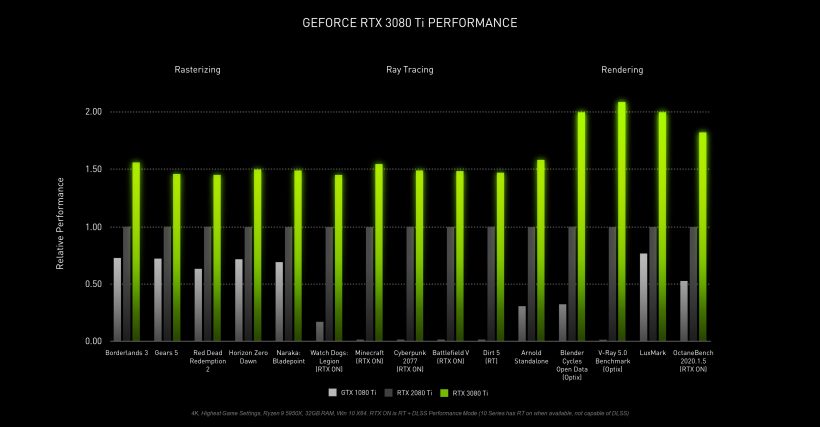
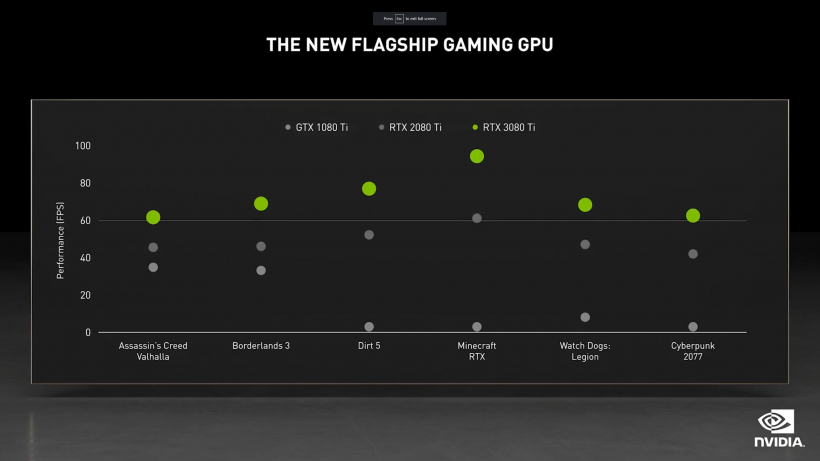
Especificações da placa gráfica NVIDIA GeForce RTX 30 Series’Ampere’:
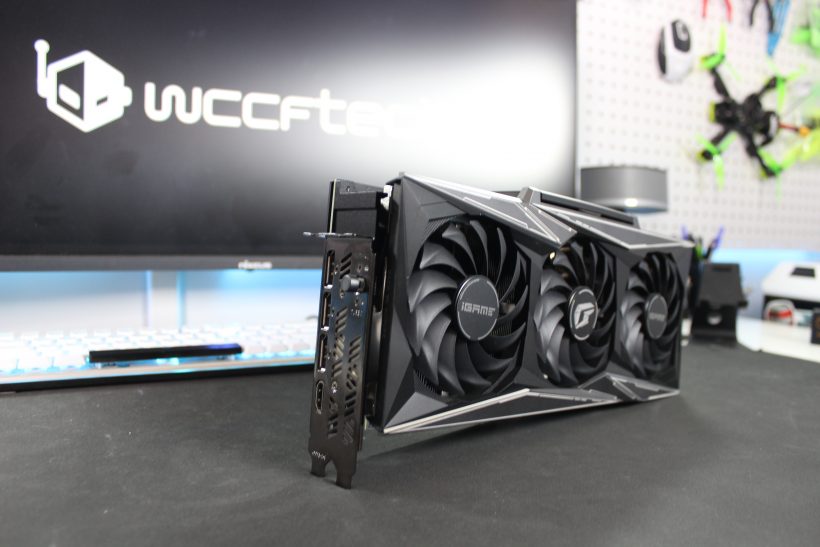


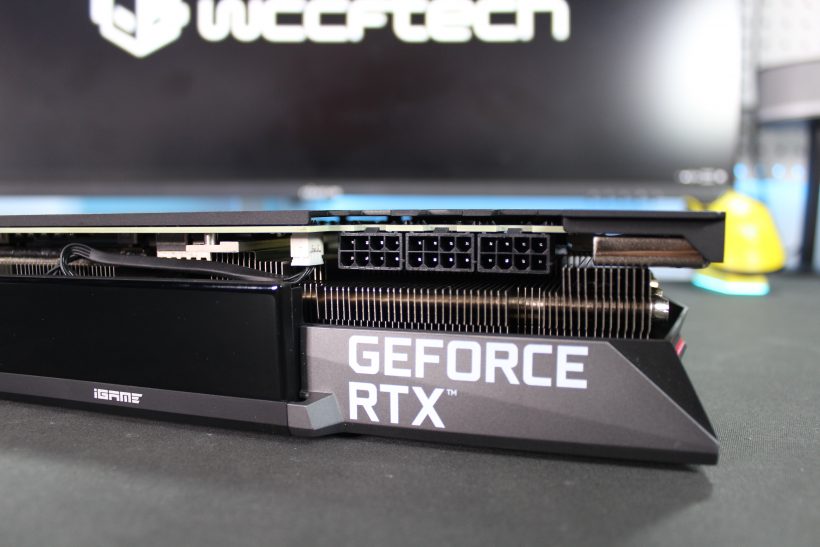
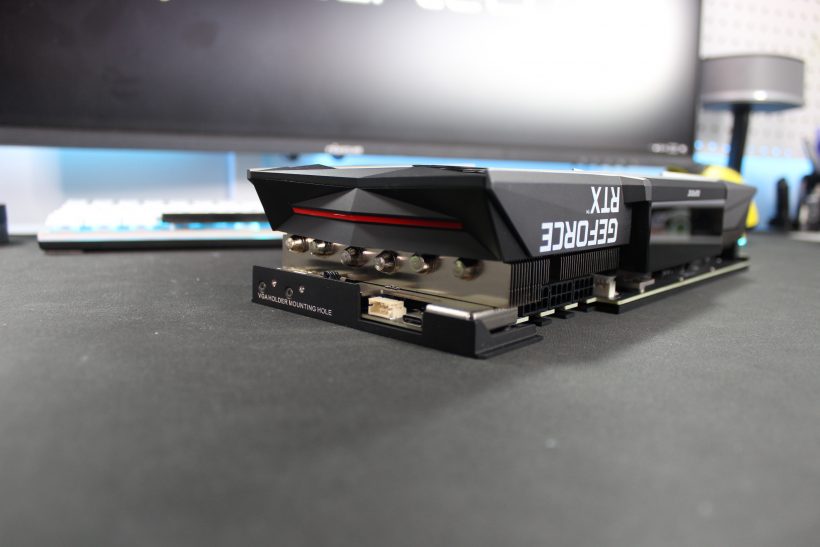
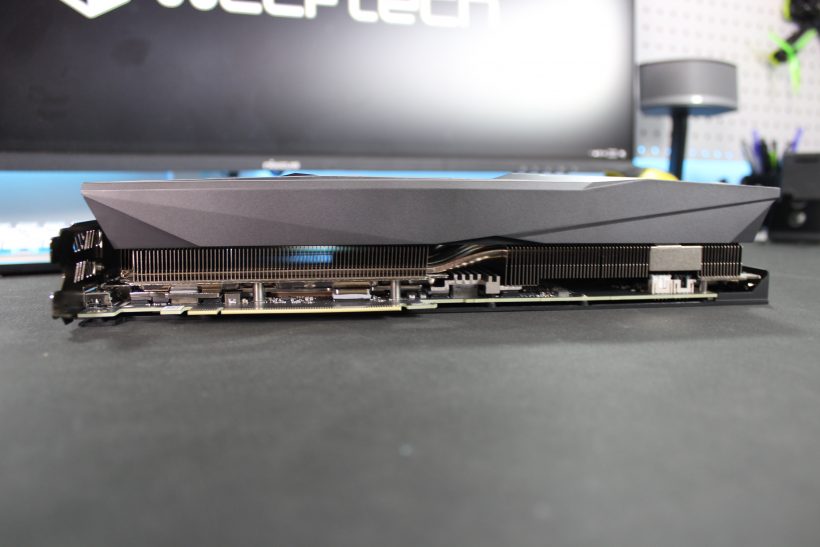
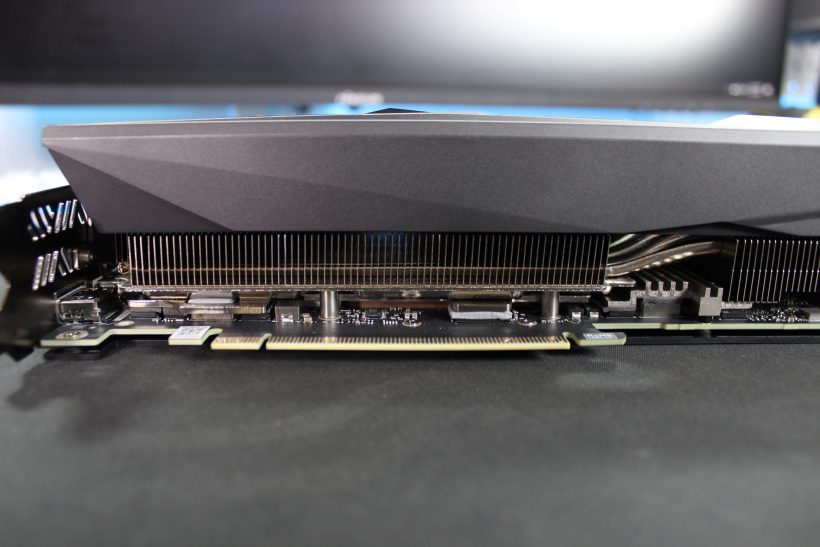

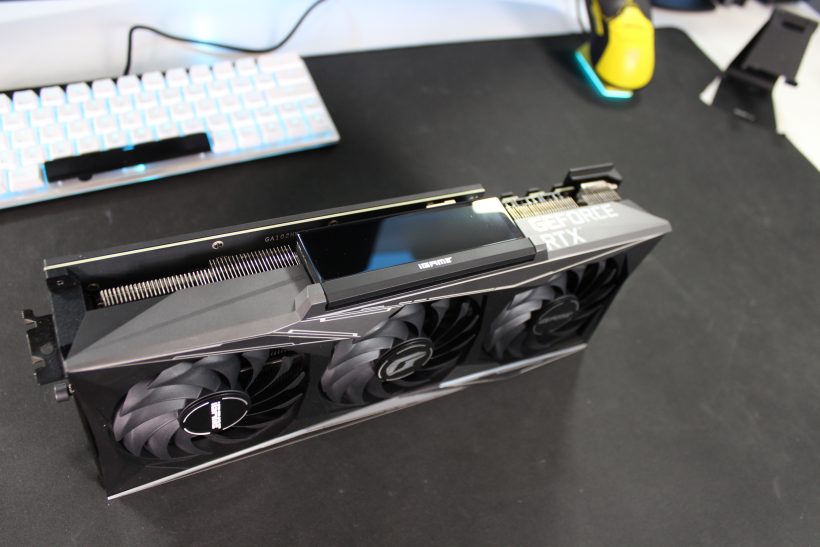
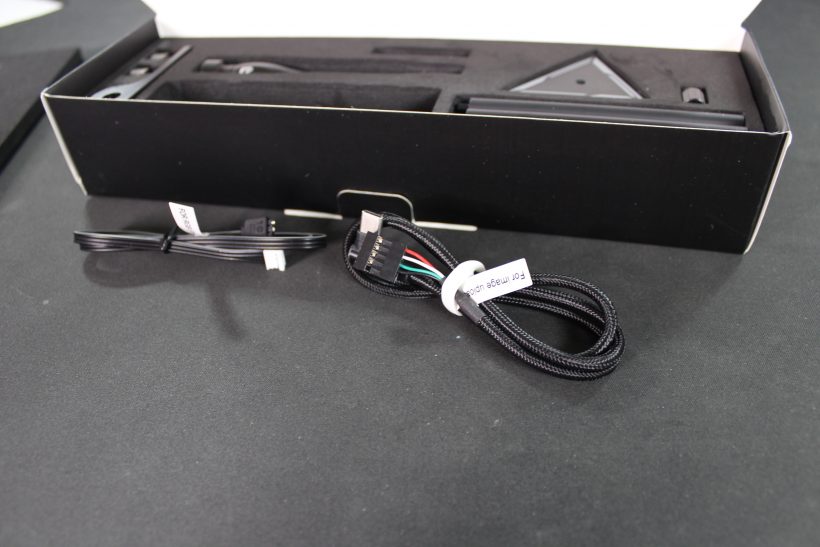
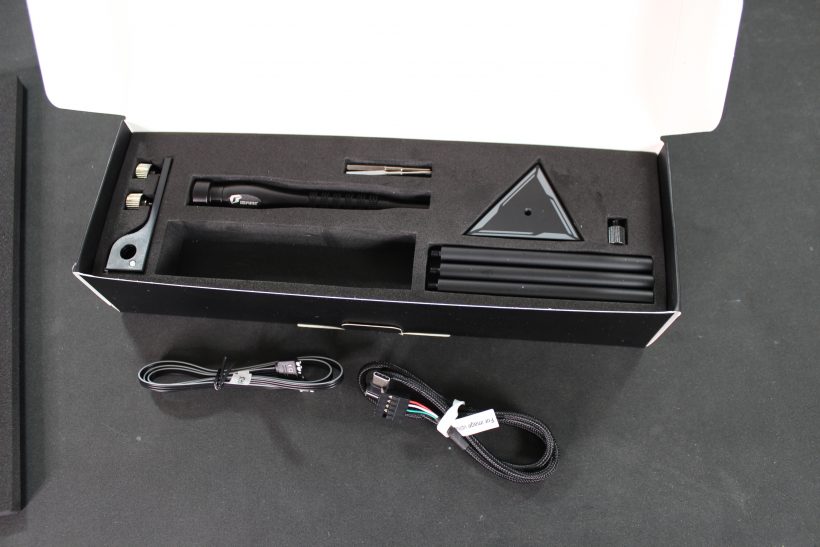
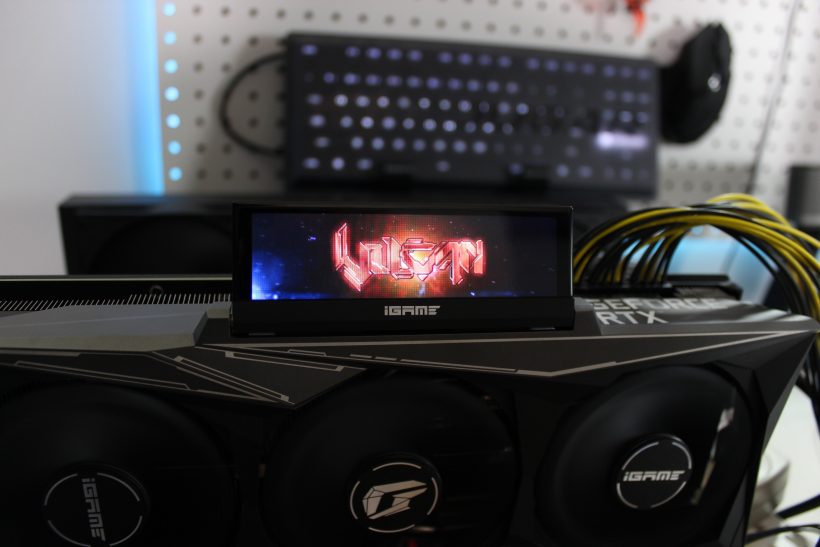
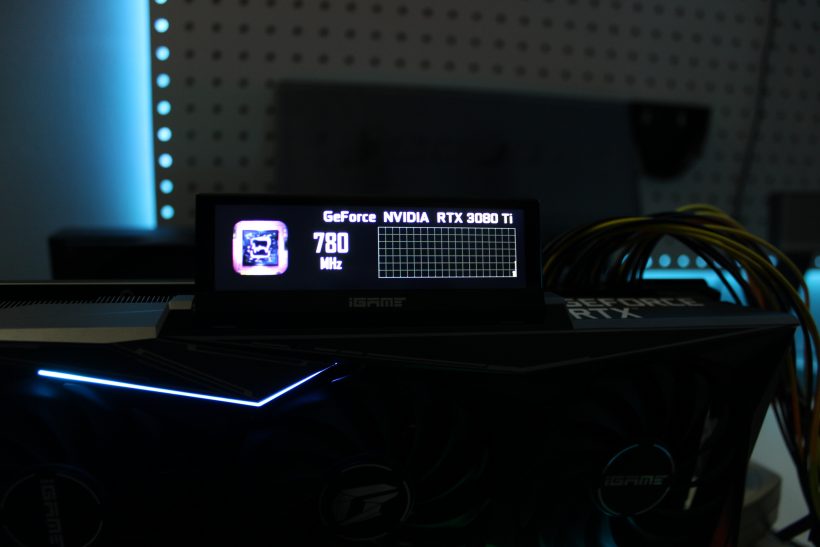

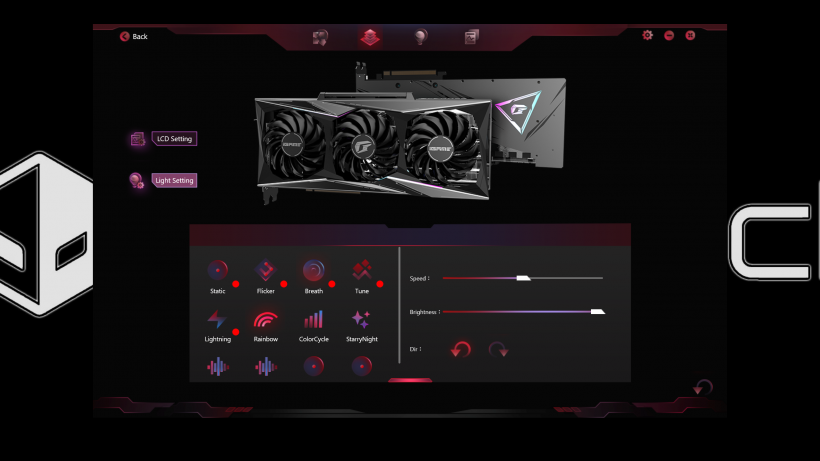
Sistema de teste
ComponentesX570 CPURyzen 9 5900X (estoque) Memória 32GB Hyper X Predator DDR4 3600 MotherboardASUS TUF Gaming X570 Plus-WiFi StorageTeamGroup Cardea 1TB NVMe PCIe 4.0 PSUCooler Master V1200 Platinum Windows Versão Última versão do Windows no momento do teste de agendamento de GPU acelerado por hardware, se compatível com GPU e driver. Memória de acesso inteligente/BARE redimensionável.
Placas de vídeo testadas:
GPUArchitectureCore Count
Clock SpeedMemory Capacity
Memory Speed AMD Radeon RX 6900 XTRDNA 251202015/225016 GB GDDR616Gbps AMD Radeon RX 6800 XTRDNA 246082015/225016 GB GDDR616Gbps AMD Radeon RX 6800RDNA 238401815/210516 GB GDDR616Gbps NVIDIA RTX 3090 FEAmpere104961395/169.524 GB GDDR6X19.5Gbps NVIDIA RTX 3080 Ti FEAmpere102401365/166512GB GDDR6X19Gbps NVIDIA RTX 3080 FEAmpere87041440/171010 GB GDDR6X19Gbps NVIDIA RTX 3070 FEAmpere58881500/17308 GB GDDR614Gbps AMD Radeon RX 5700XTNavi 1025601605/1755/19058 GB GDDR614Gbps Drivers usados
Drivers Radeon Configurações 21.5.2 GeForce466.47/RTX 3080 Ti On Press Driver
Firestrike
Time Spy
Port Royal
Thermals
Forza Horizon 4
Shadow of the Tomb Raider
DOOM Eternal
Watchdogs Legion
Call of Duty Modern Black Ops Cold War
Horizon Zero Dawn
Borderlands 3
Total War Saga: Troy
Shadow of the Tomb Raider
Call of Duty Modern Black Ops Cold War
Control
Resident Evil Village
Metro Exodus Enhanced Edition
Watchdogs Legion
DiRT 5
The Old Way
The PCAT Way
Control Power
